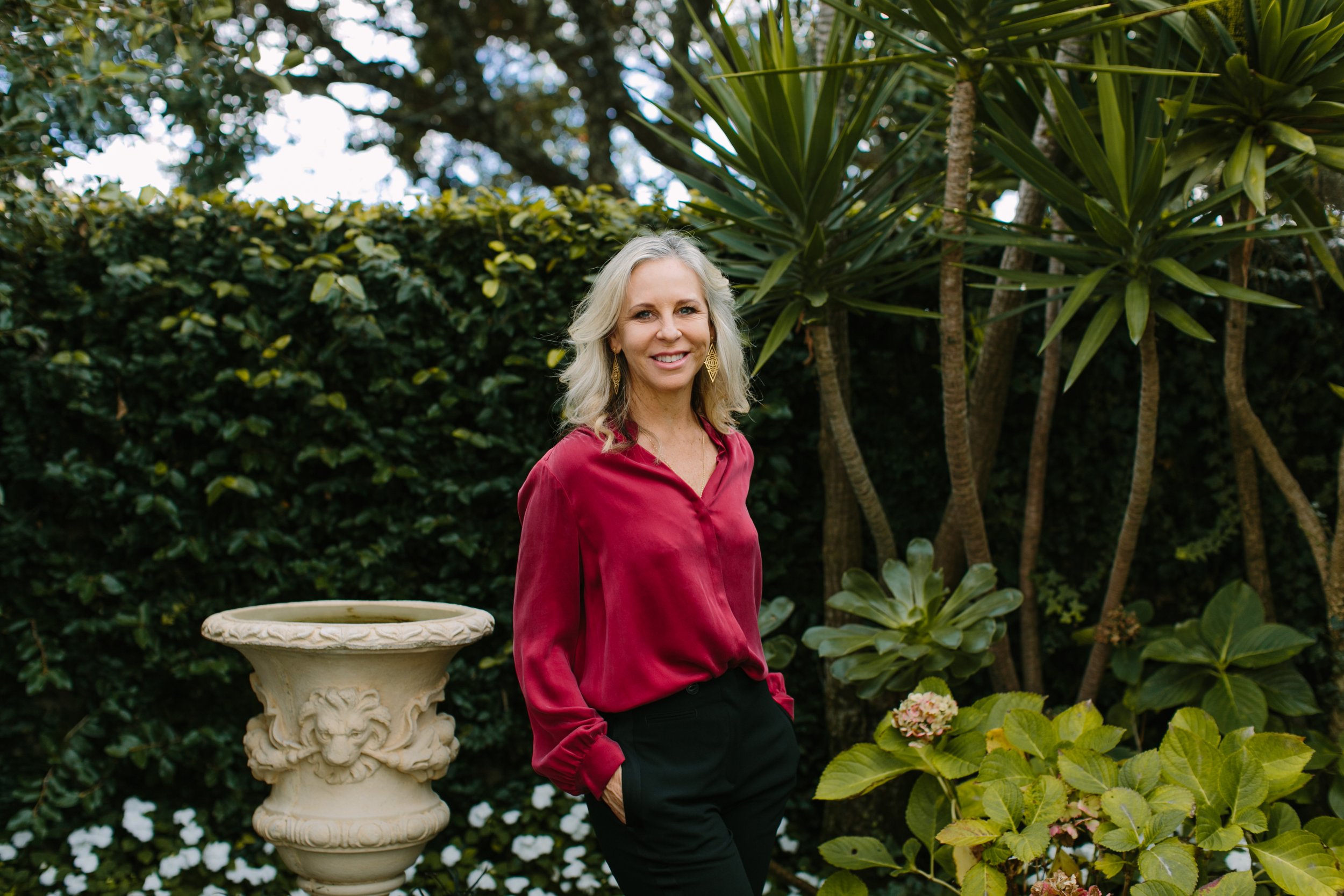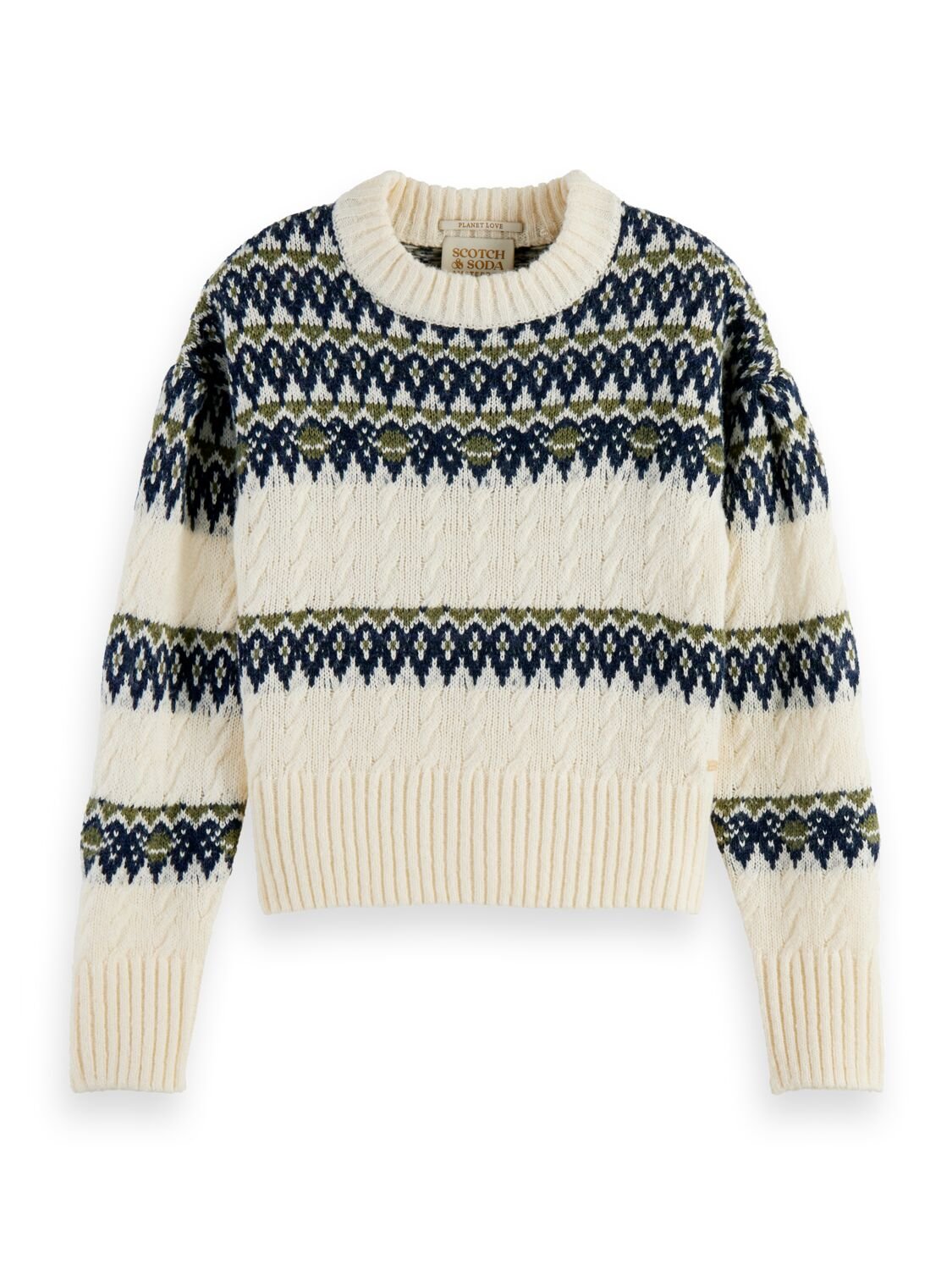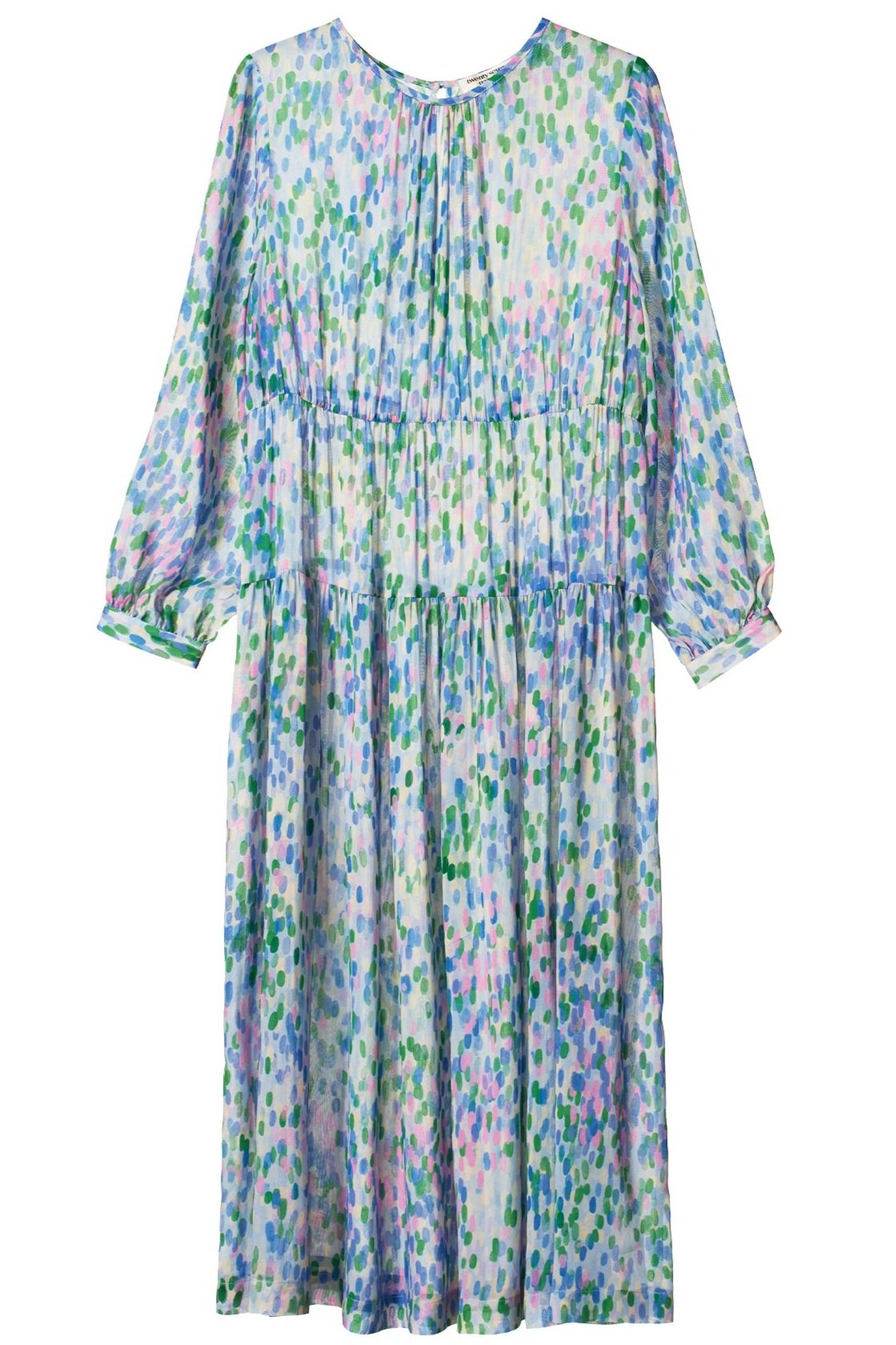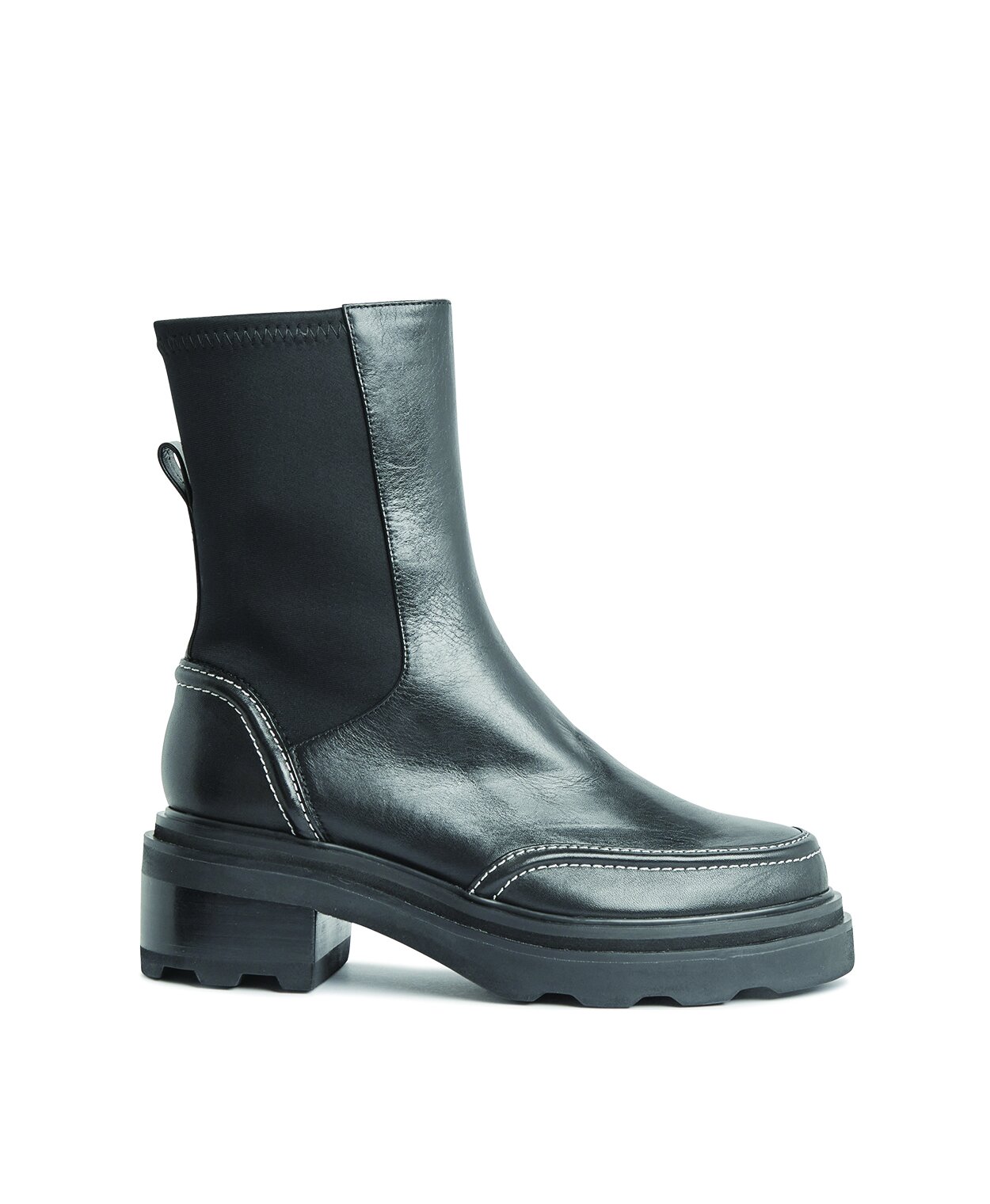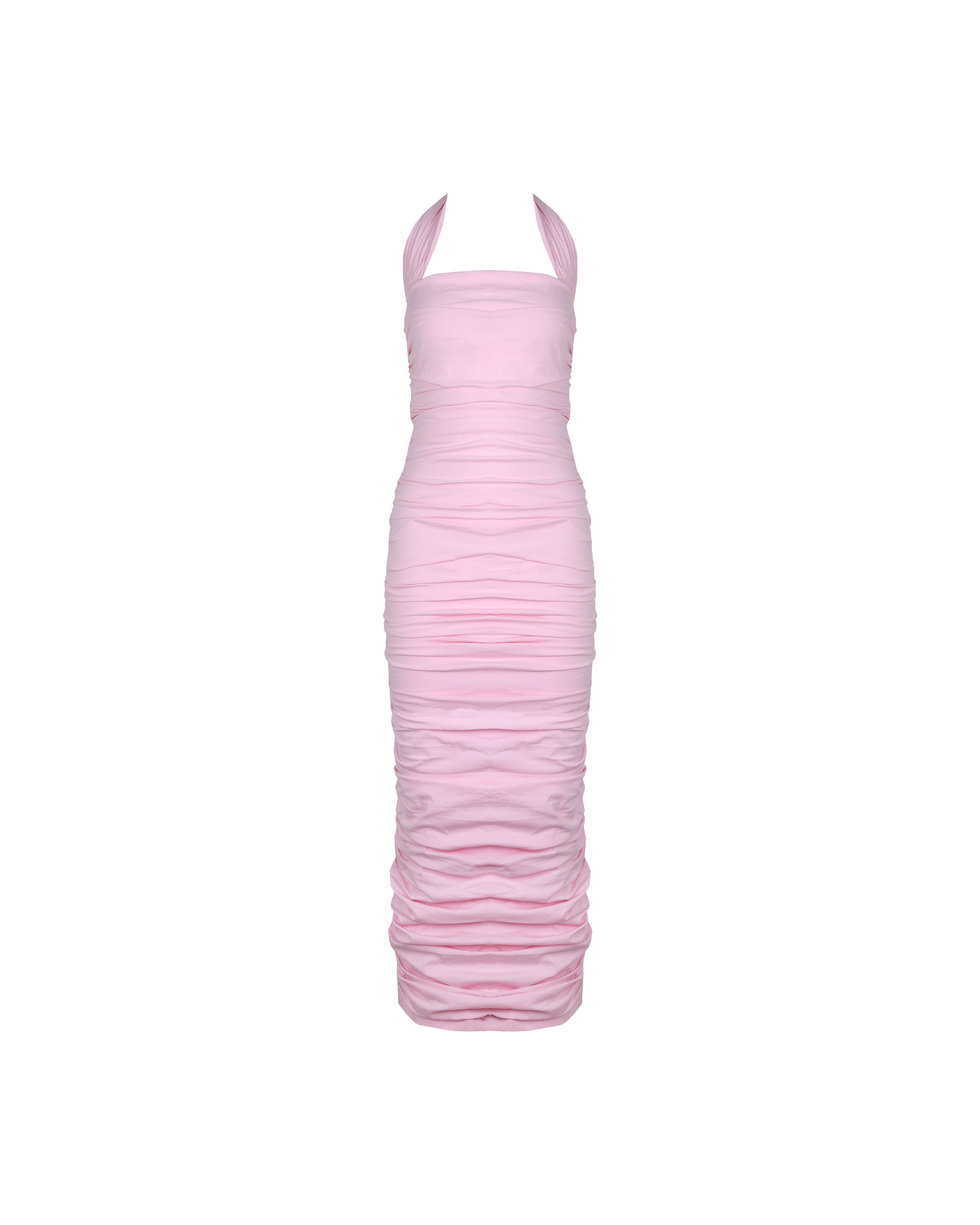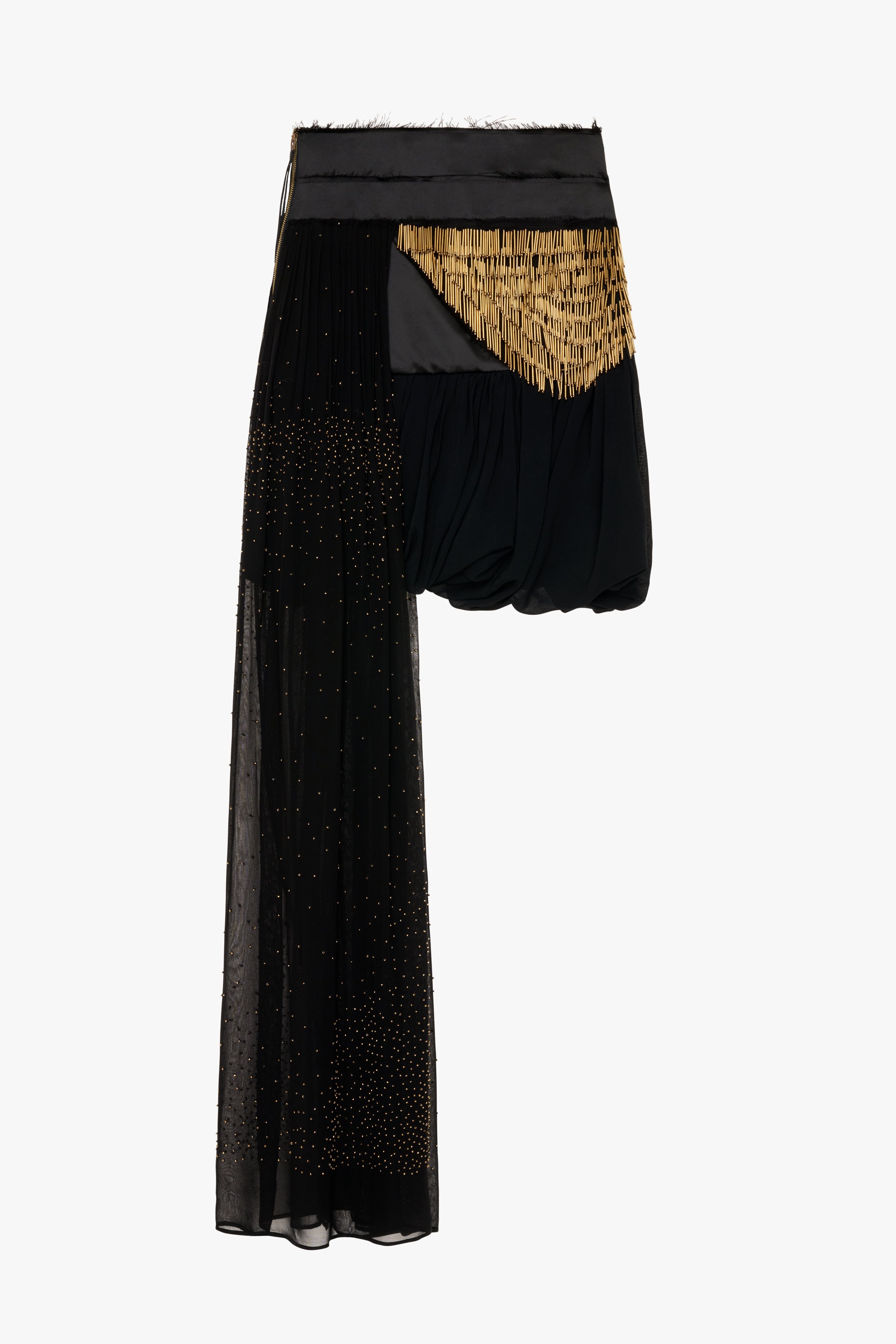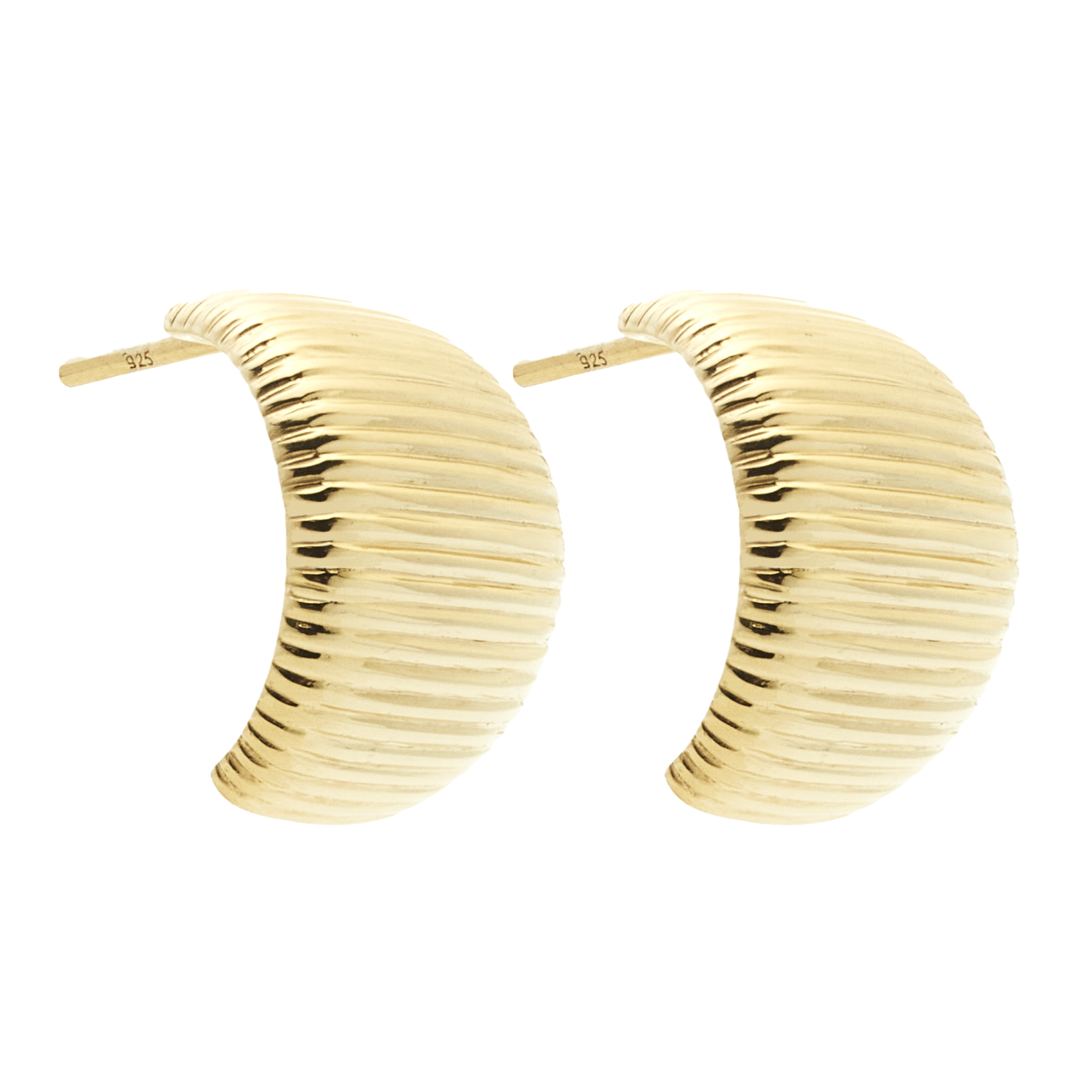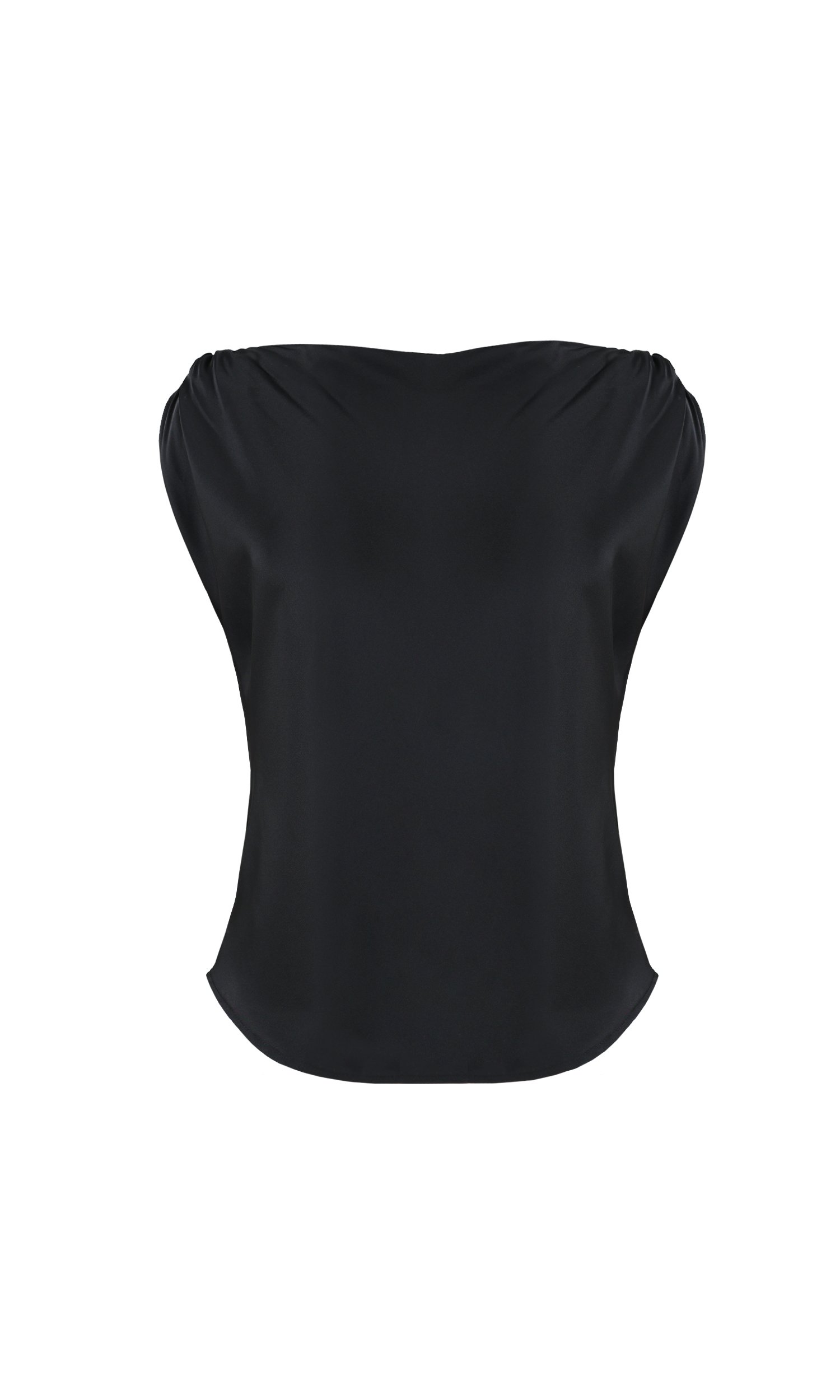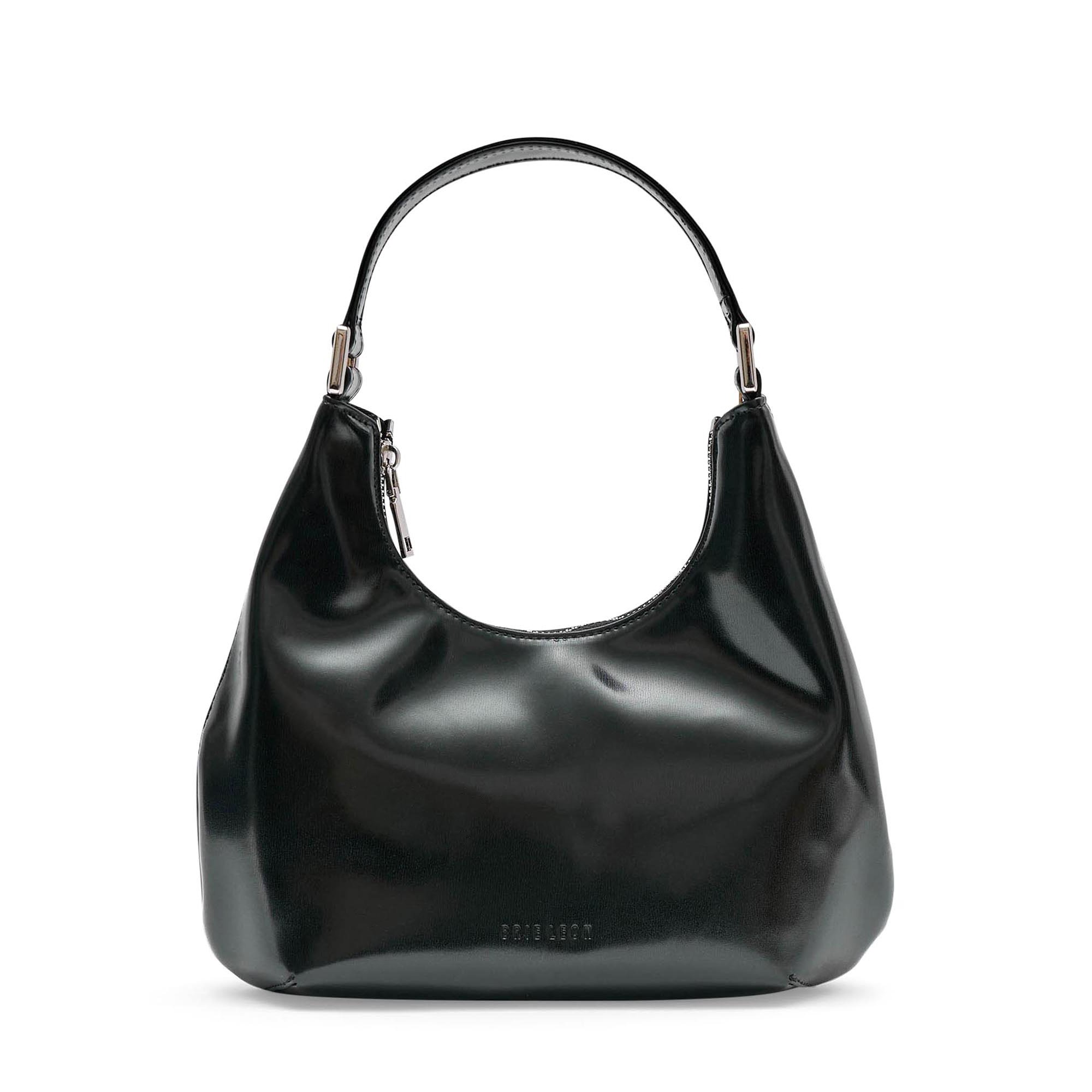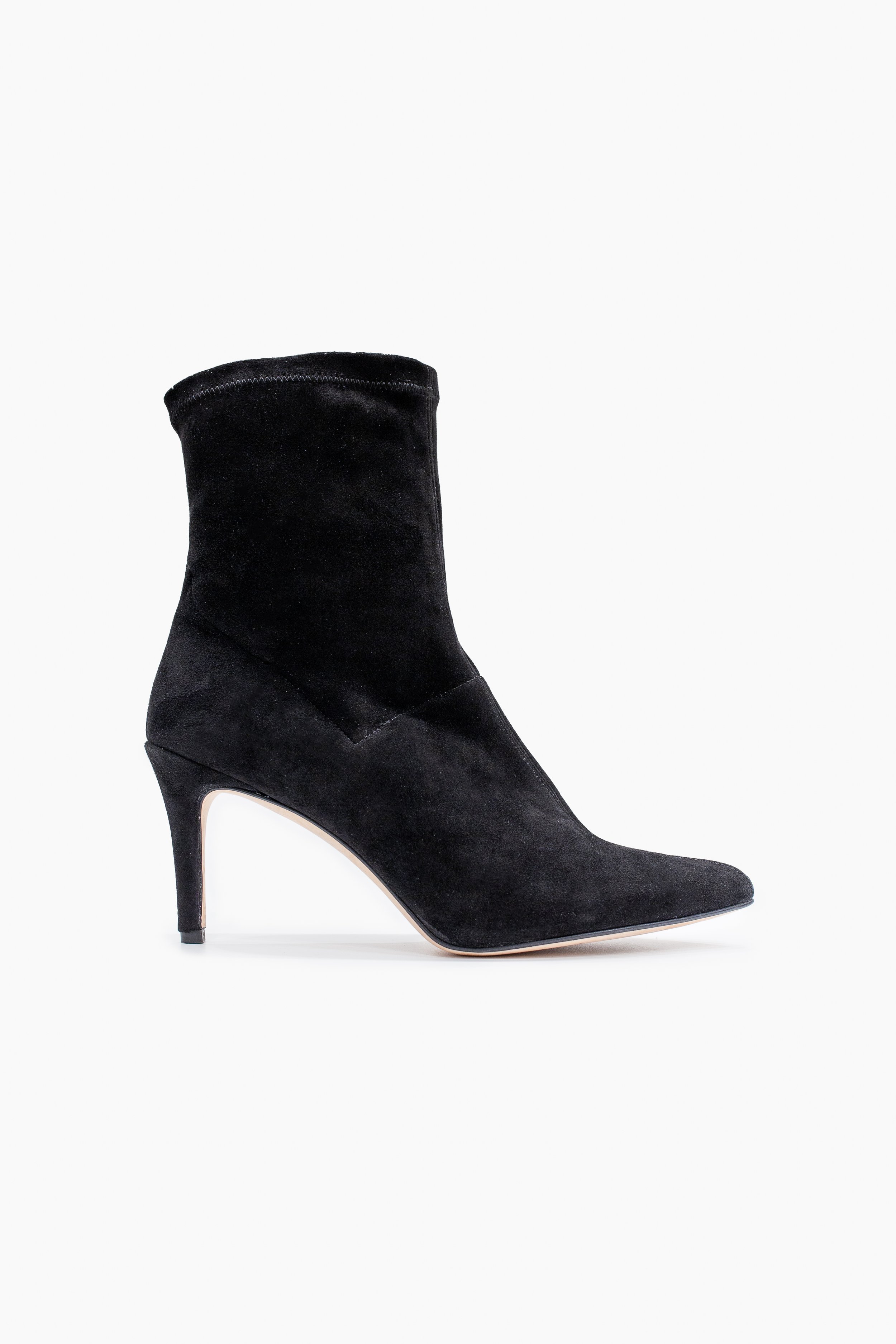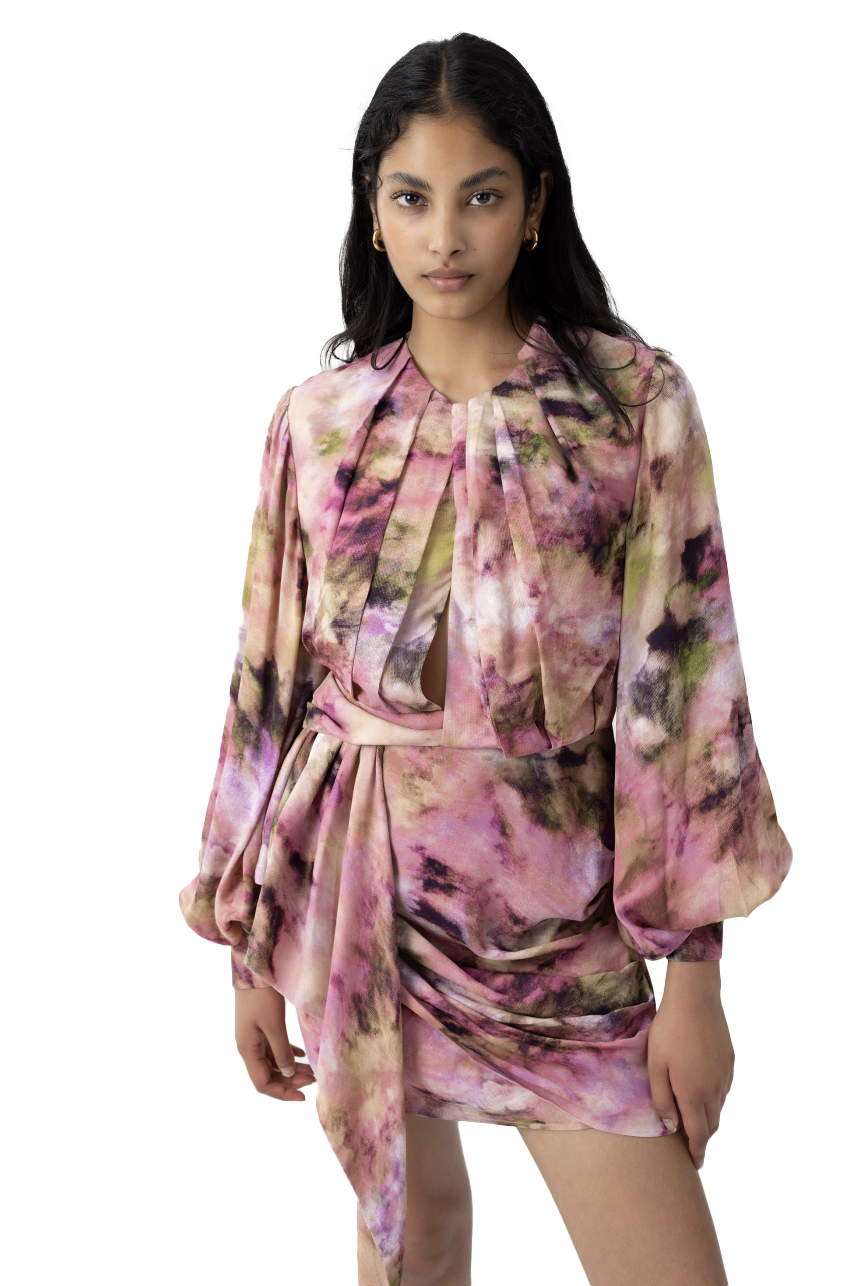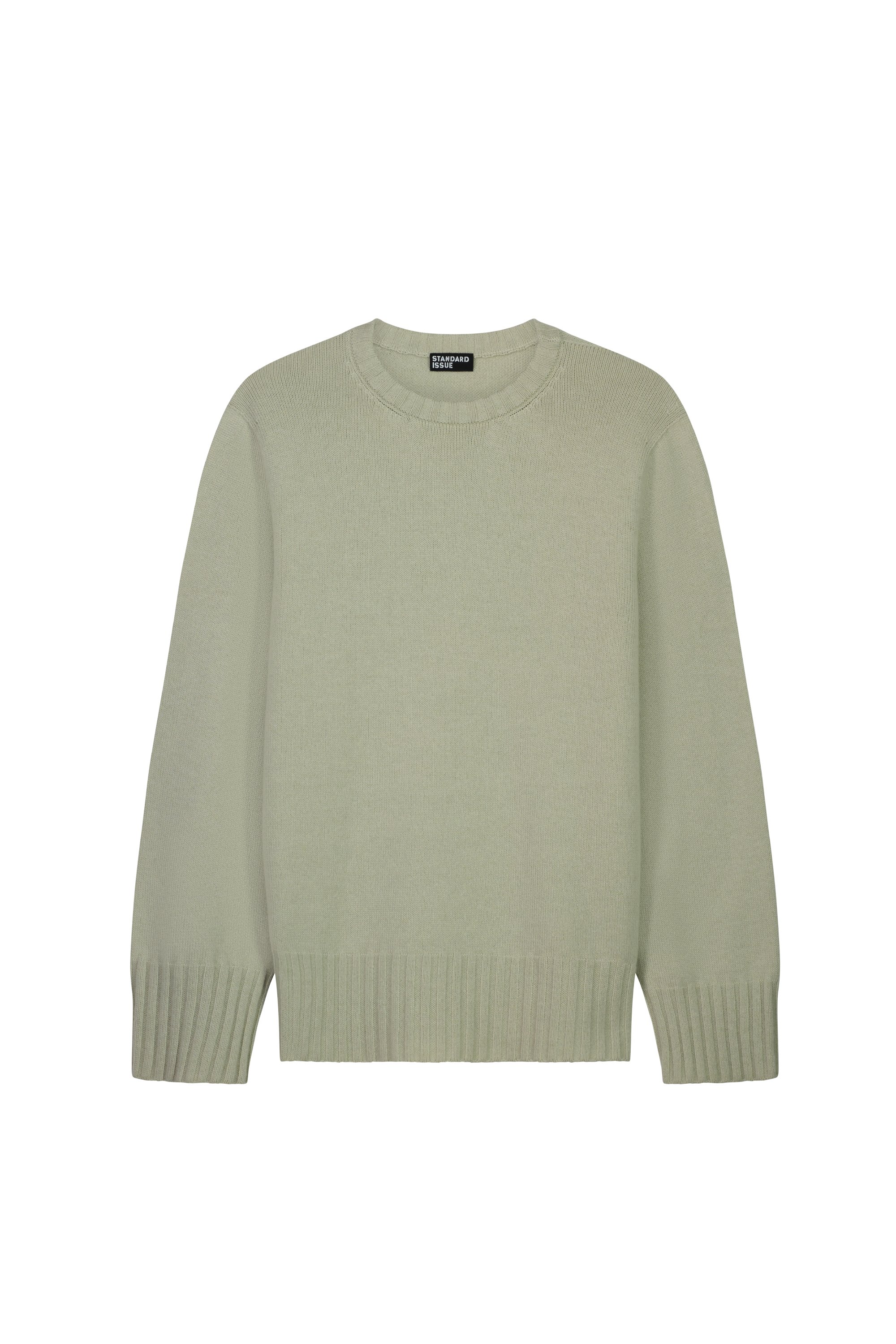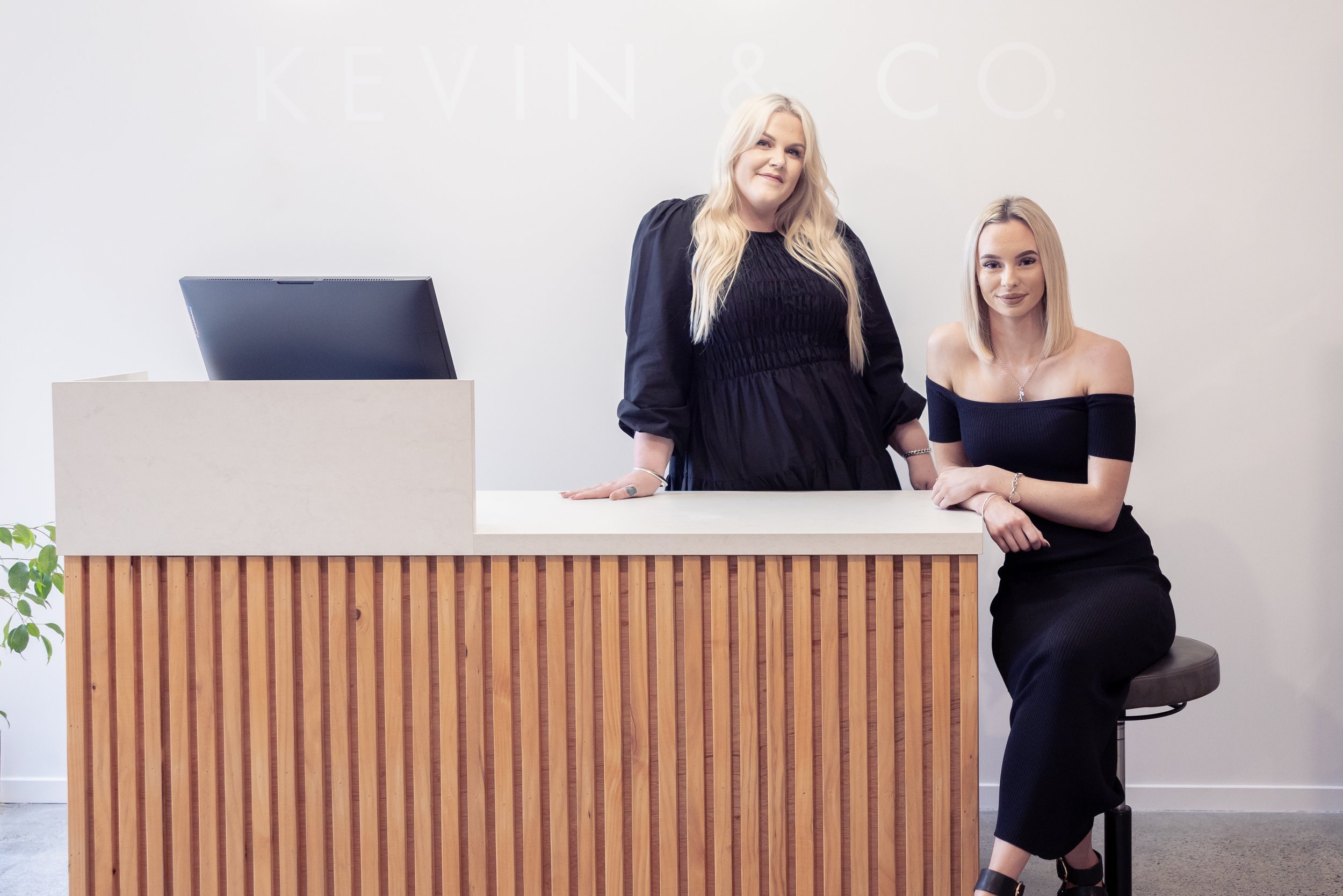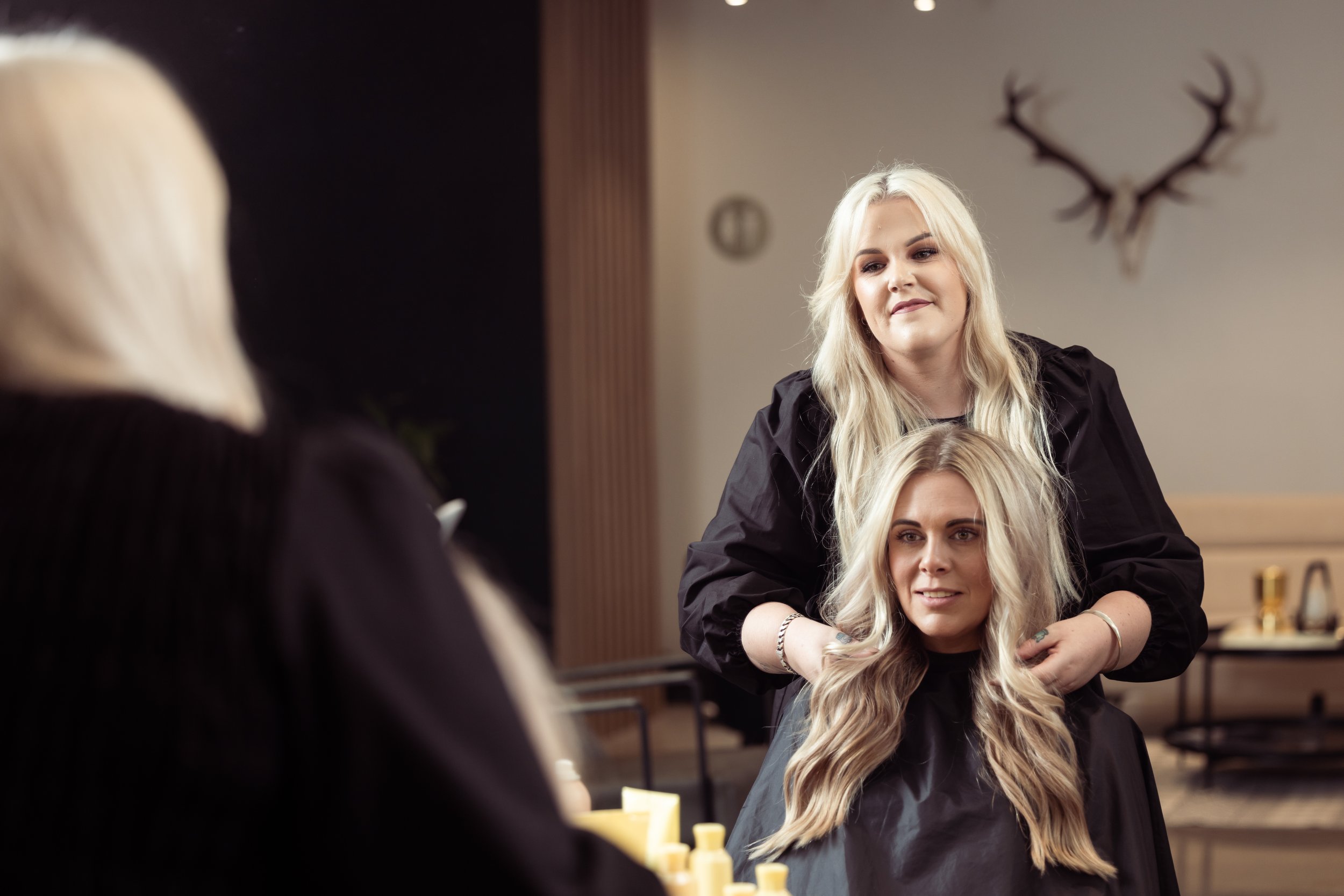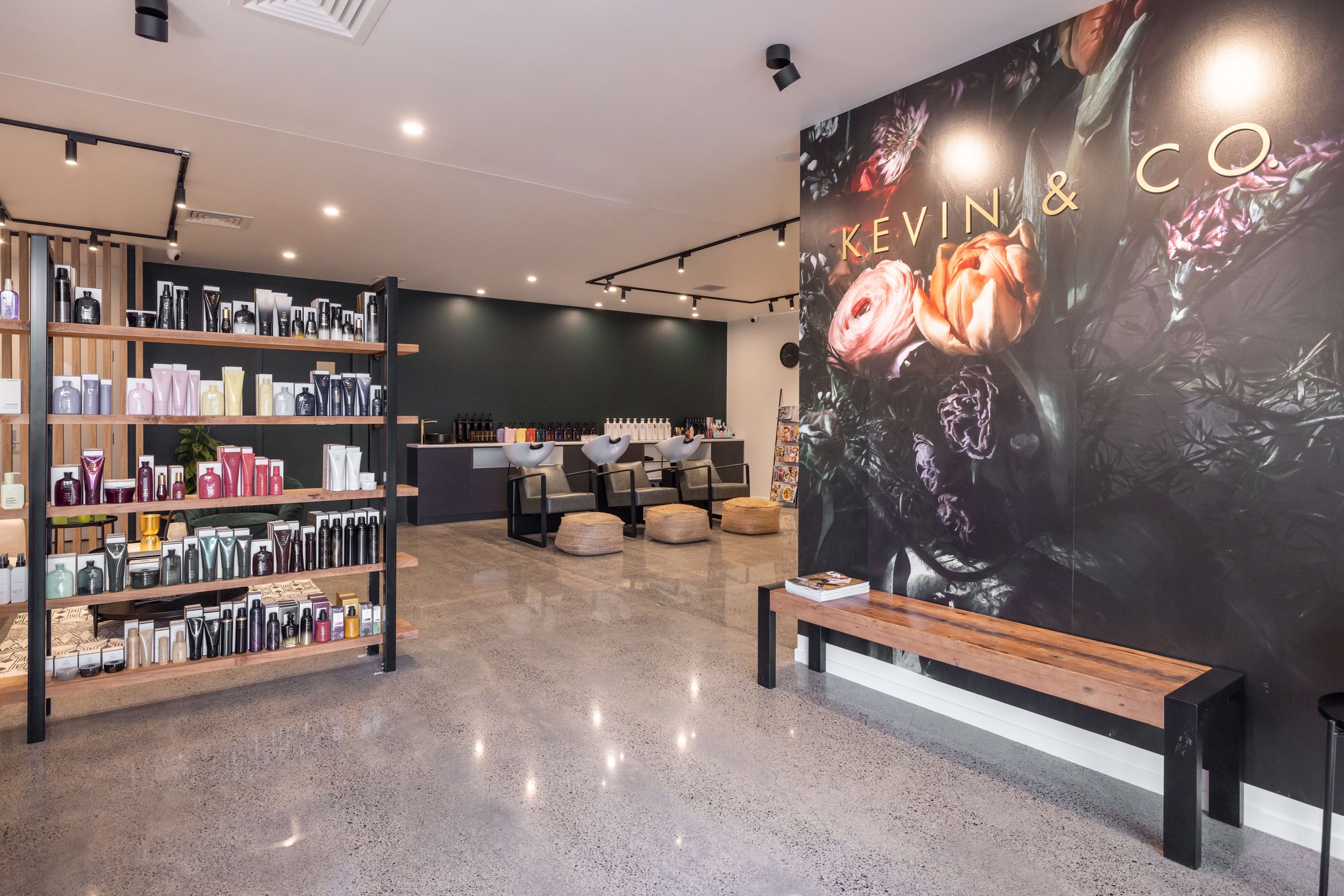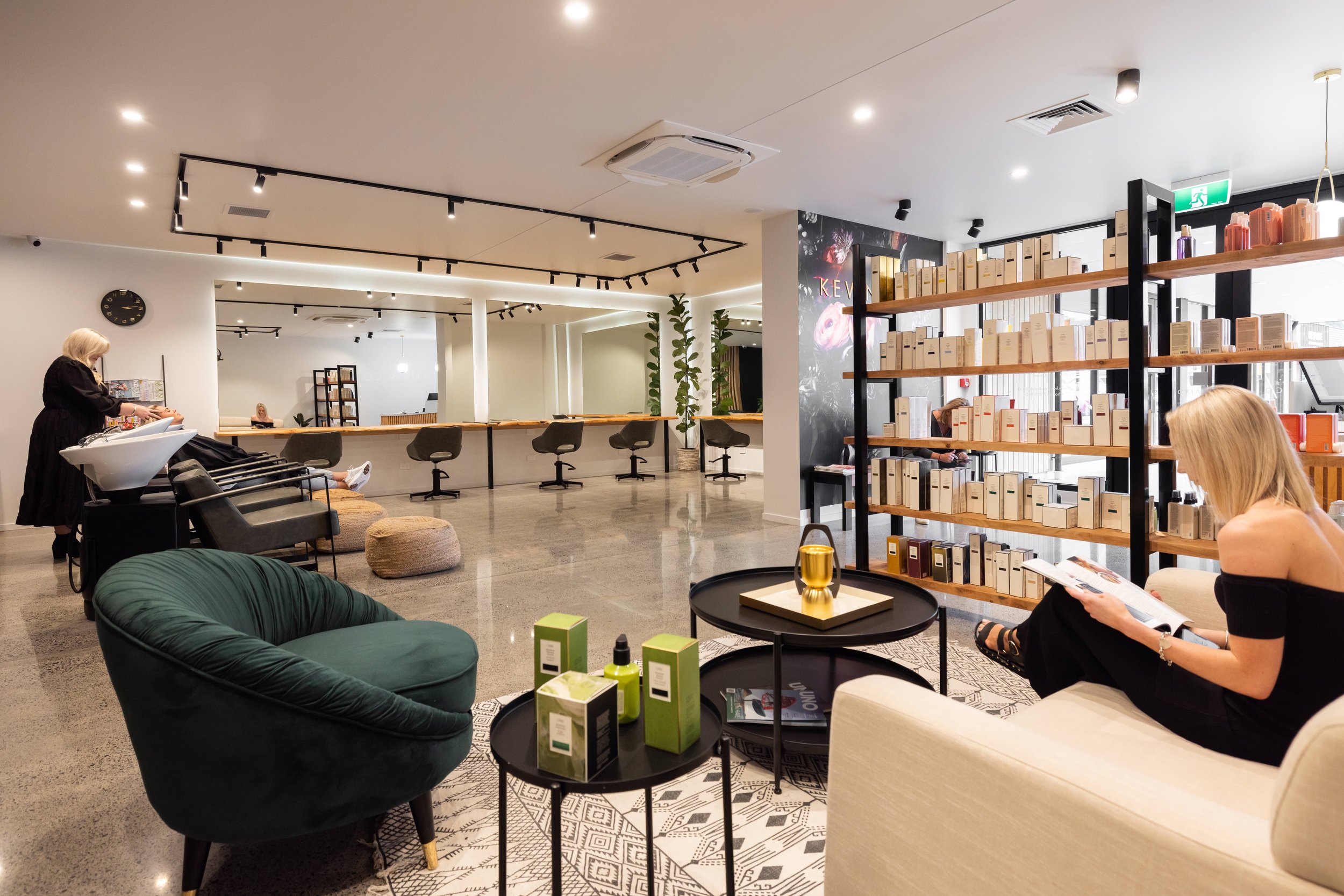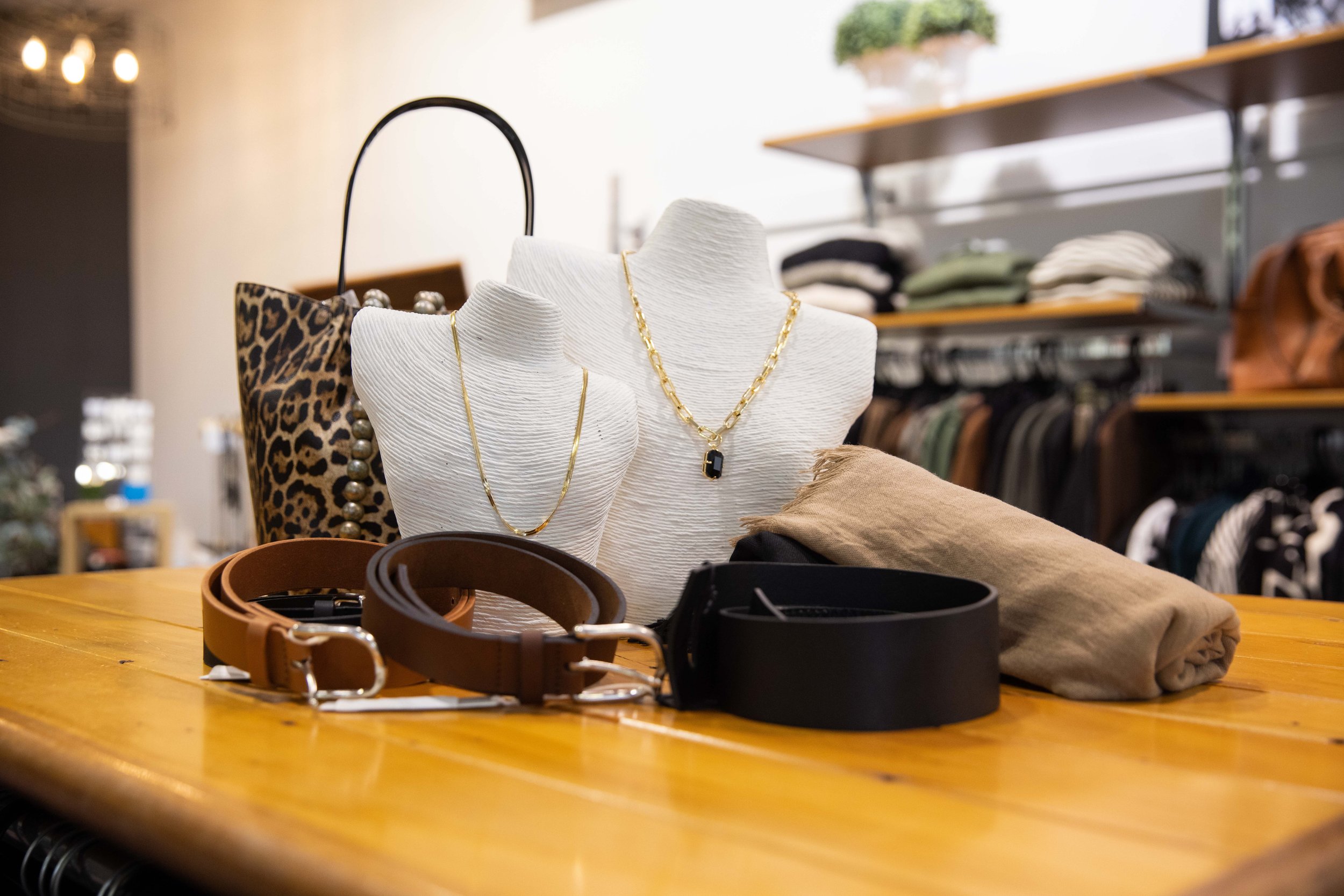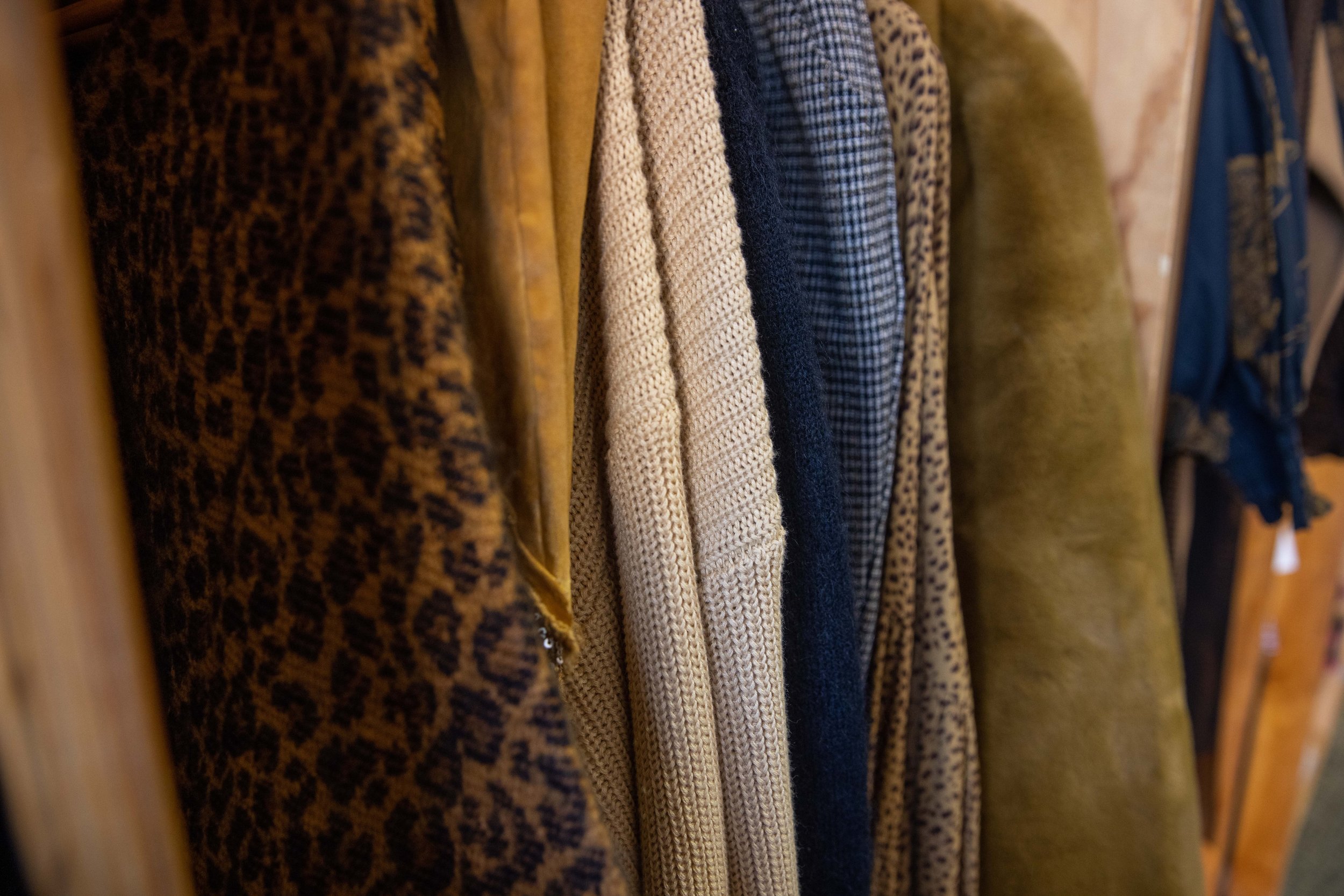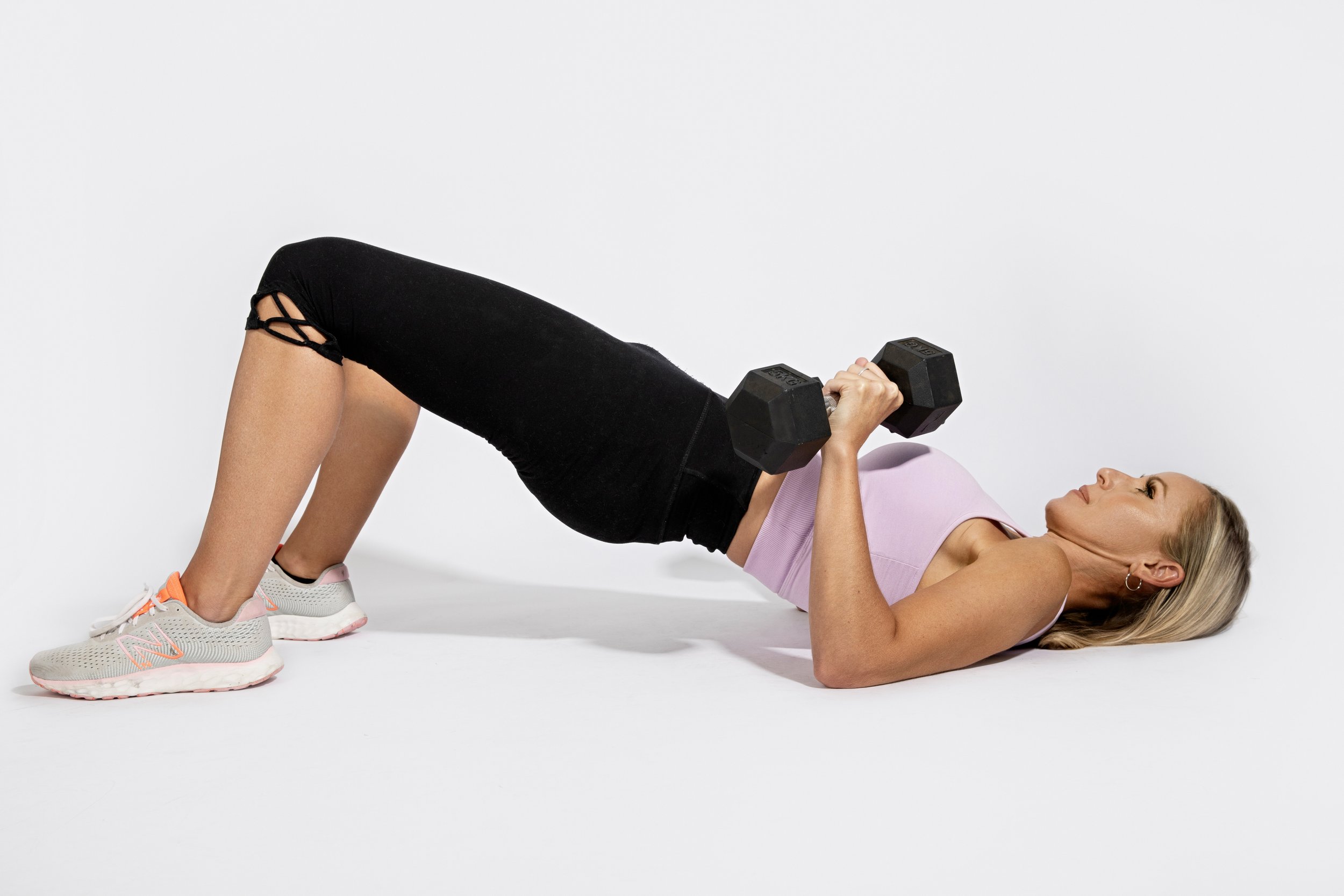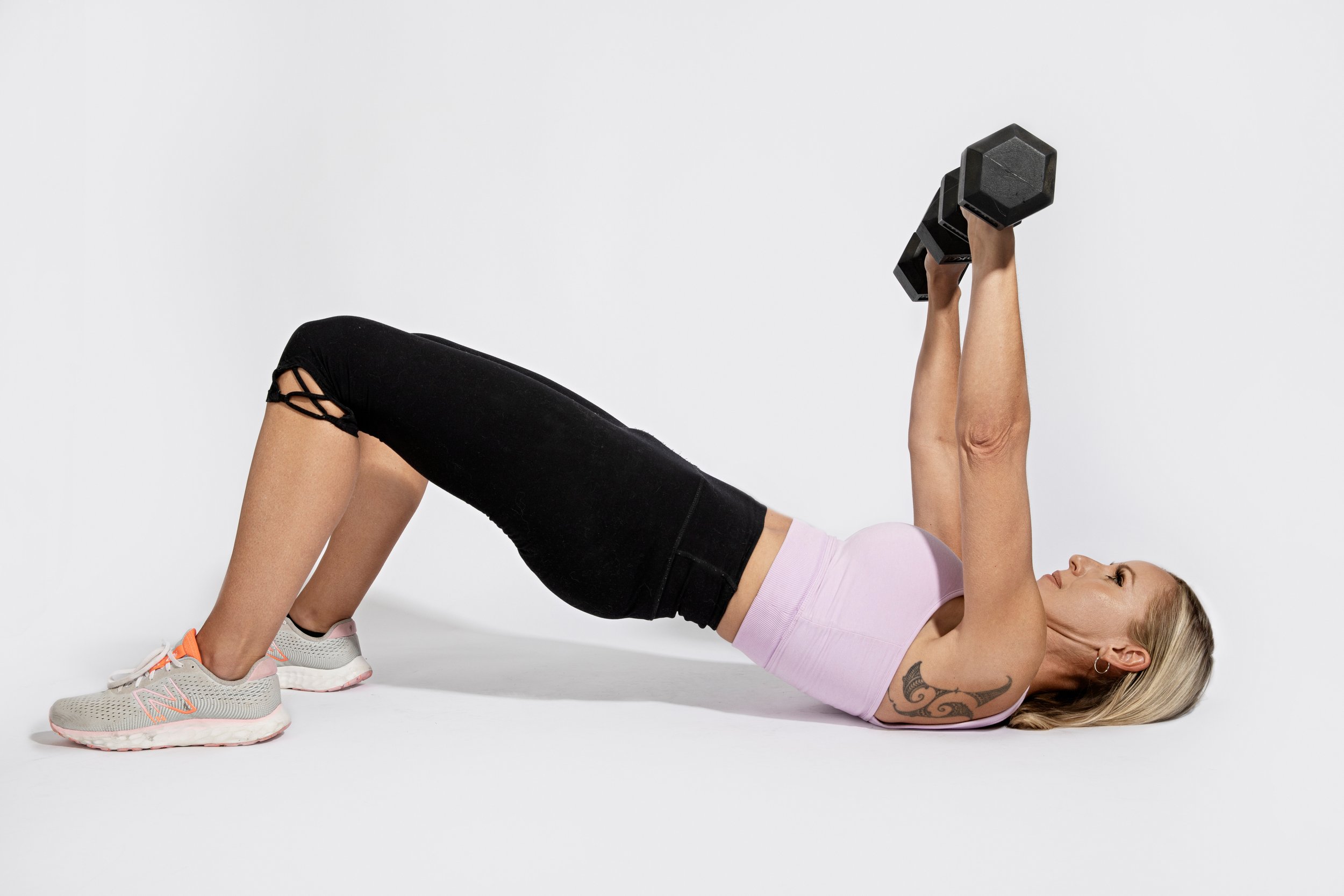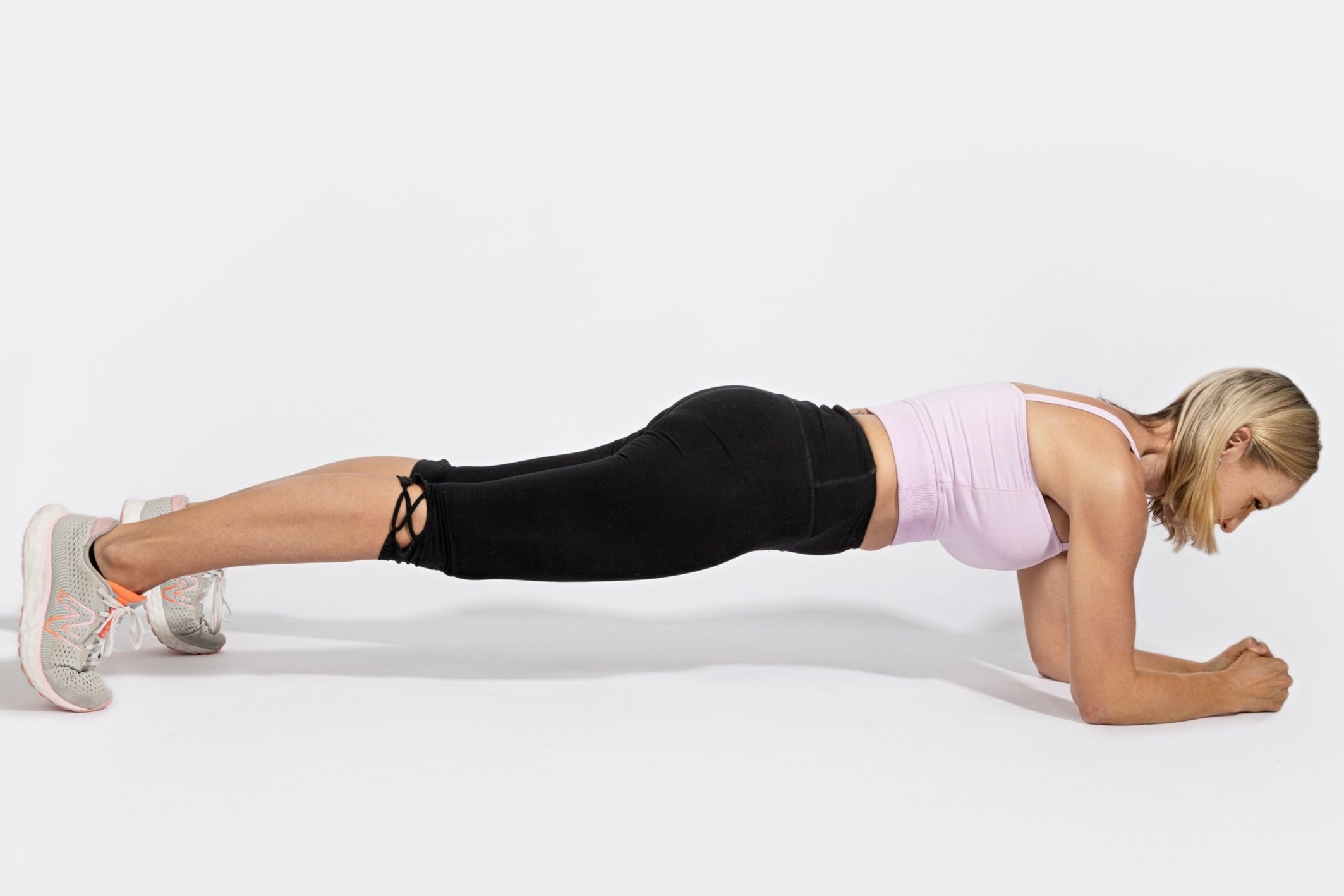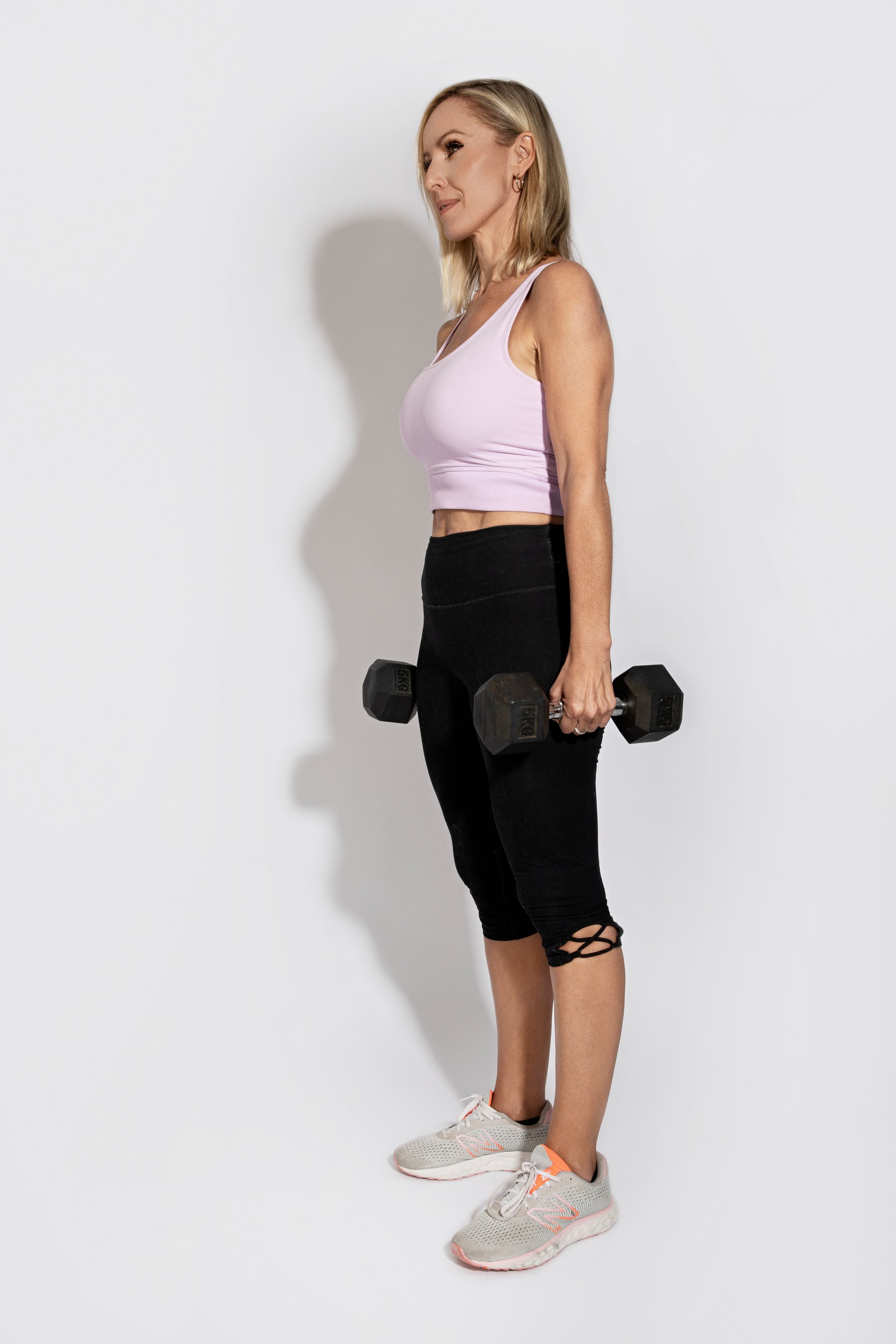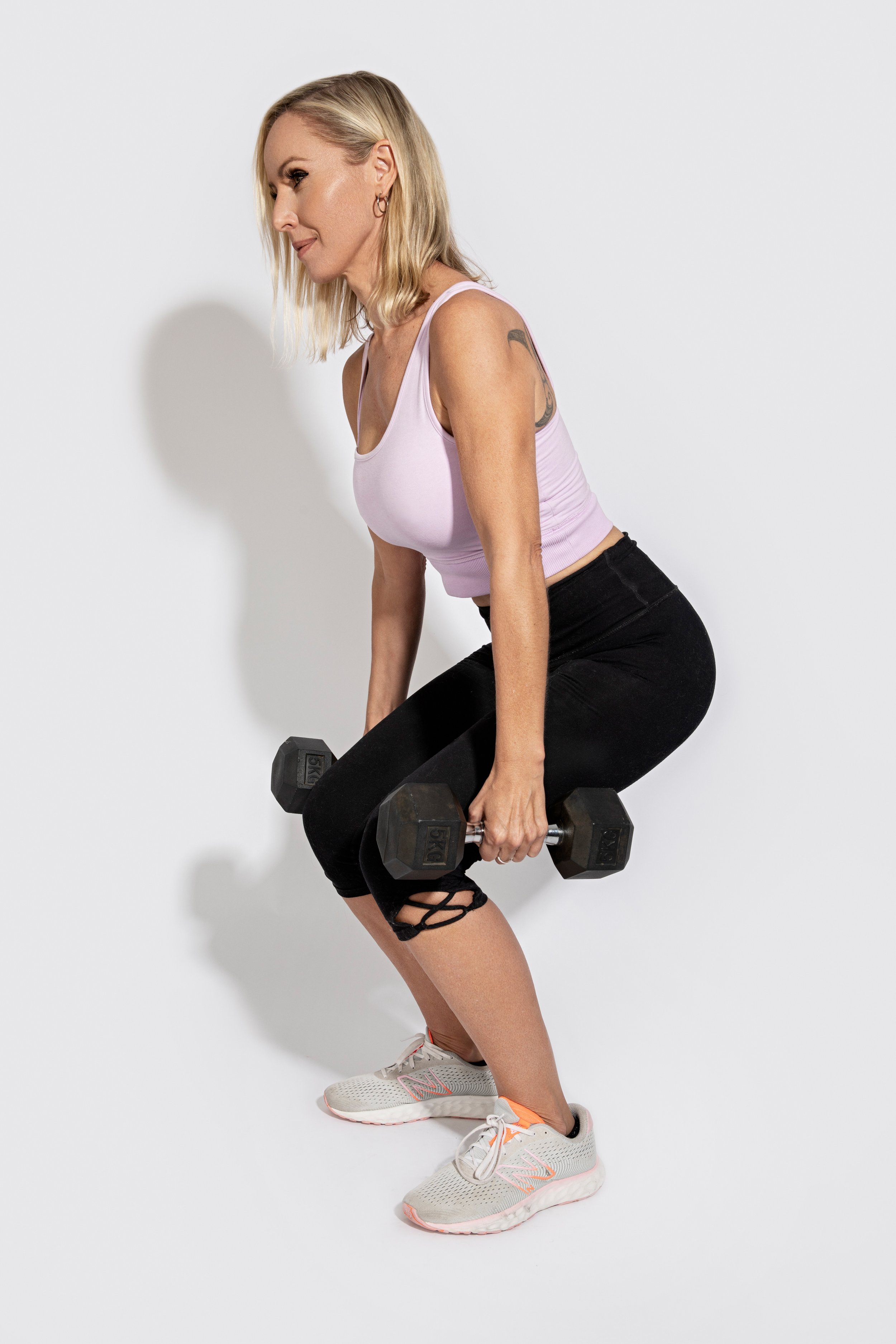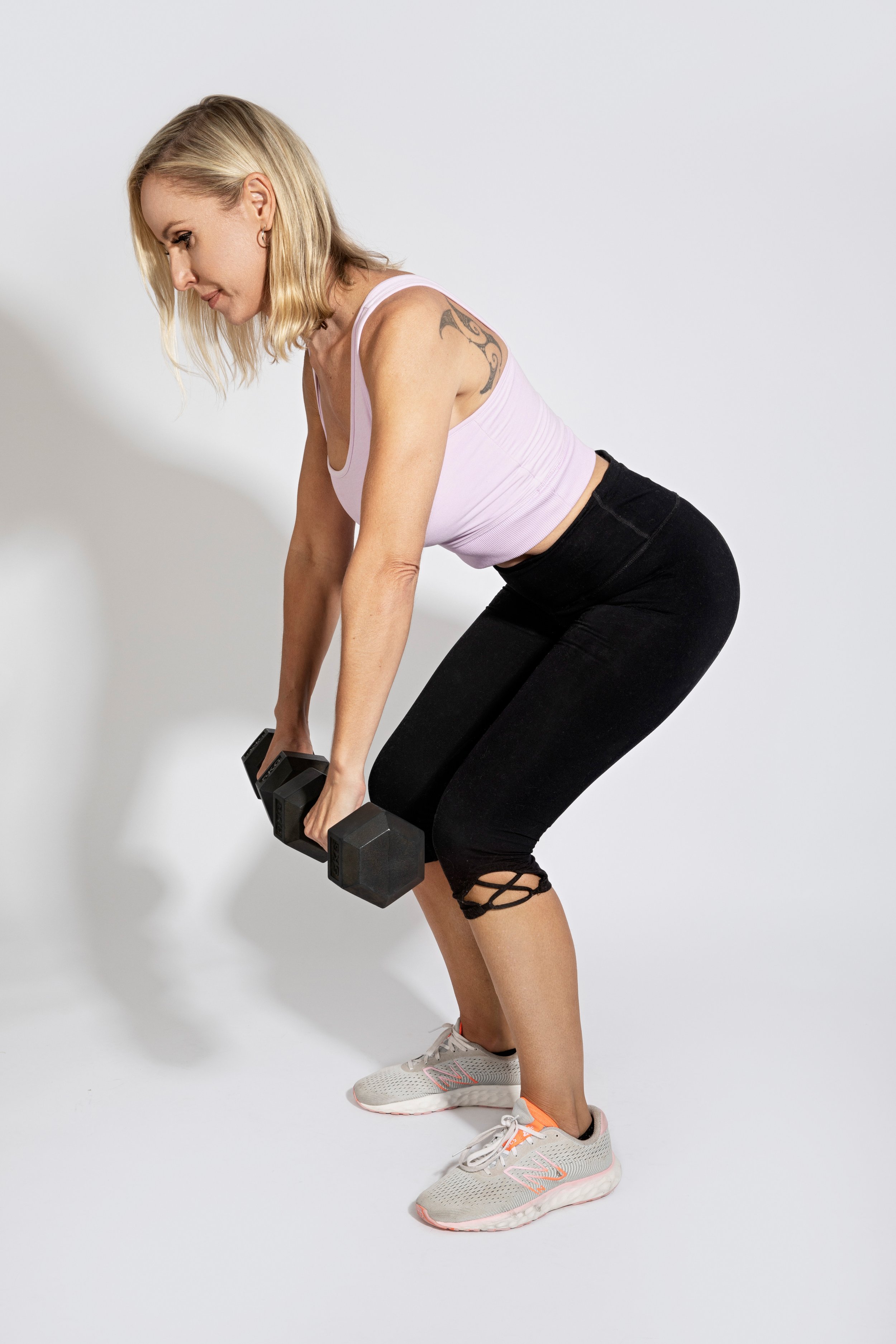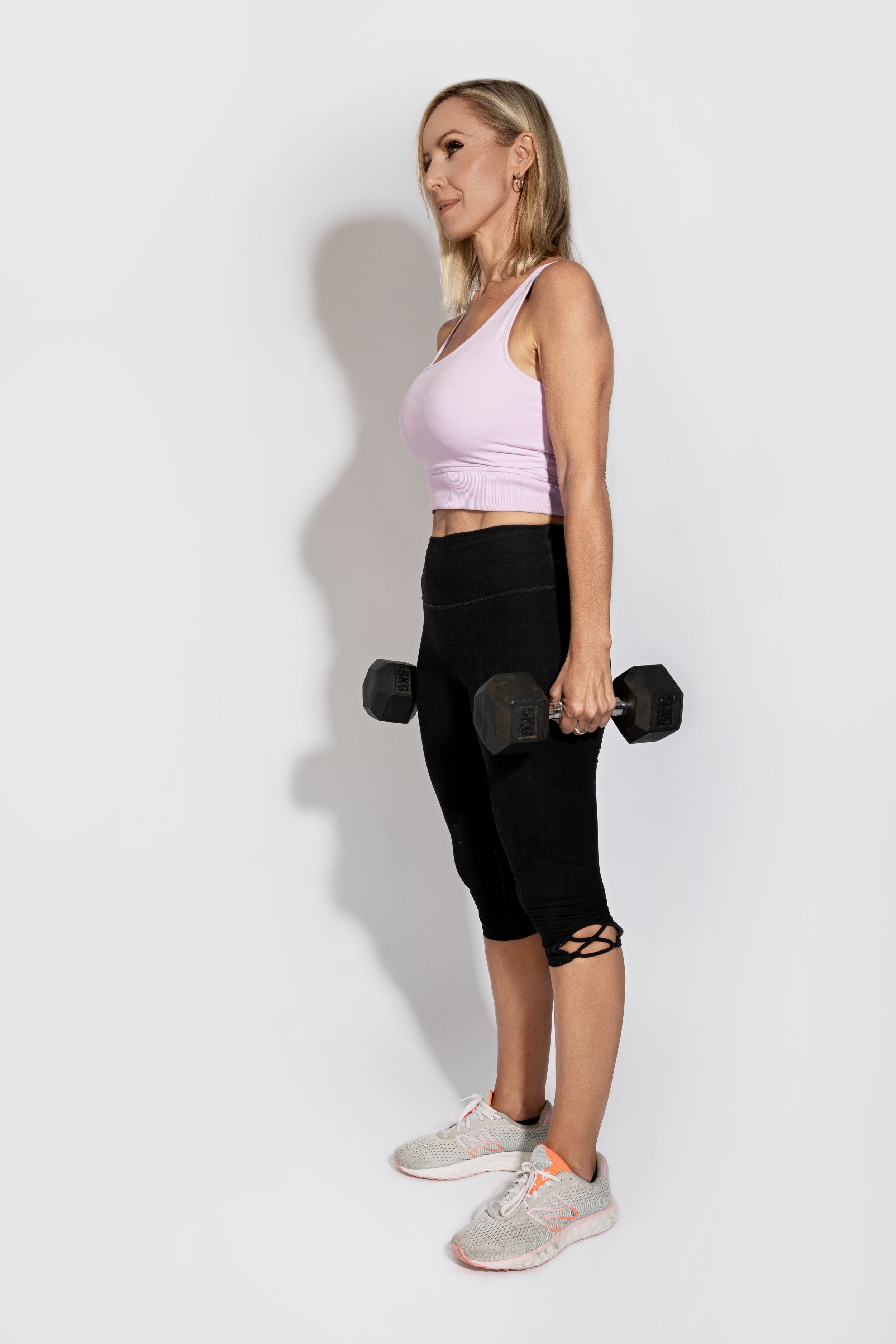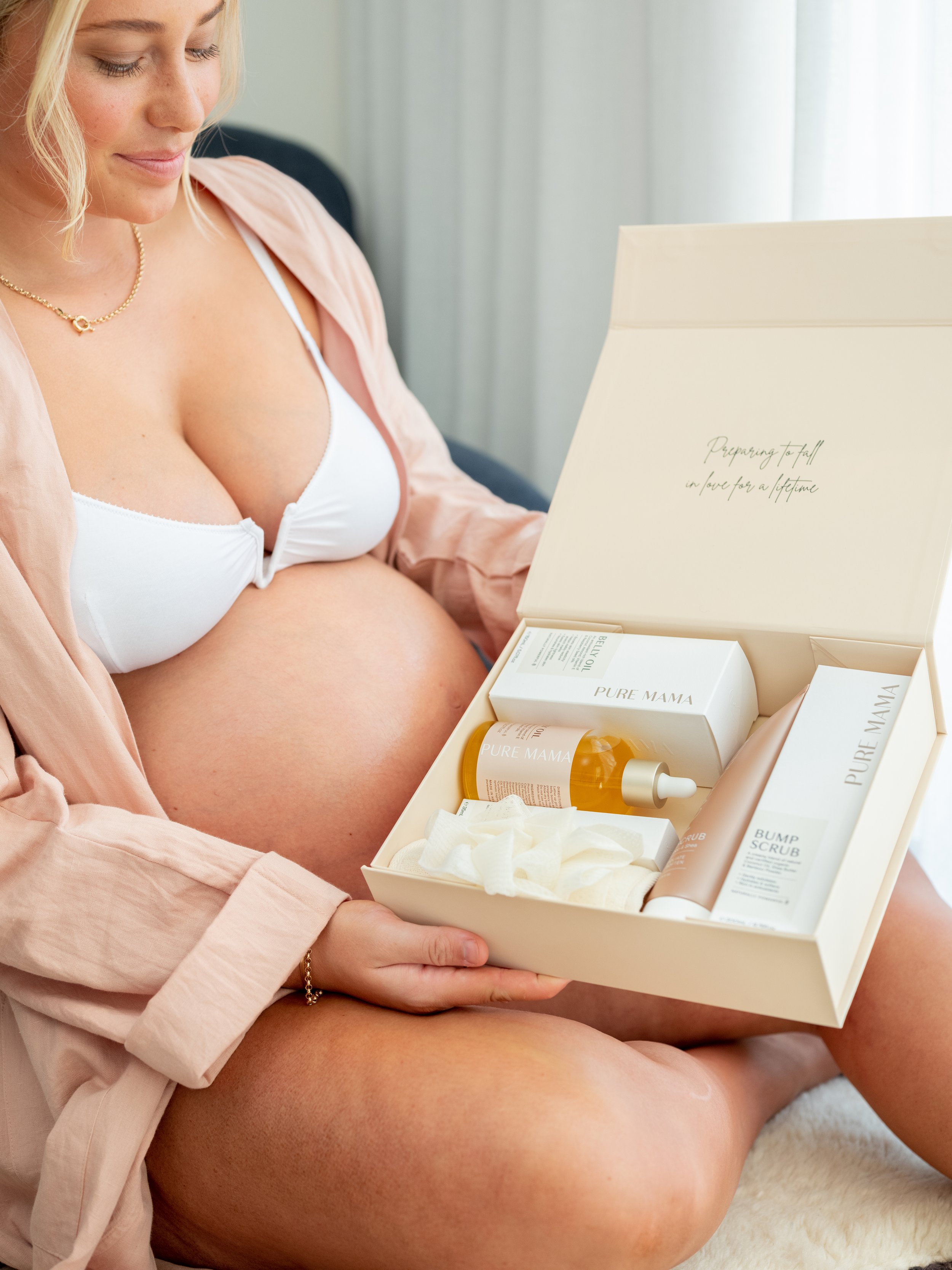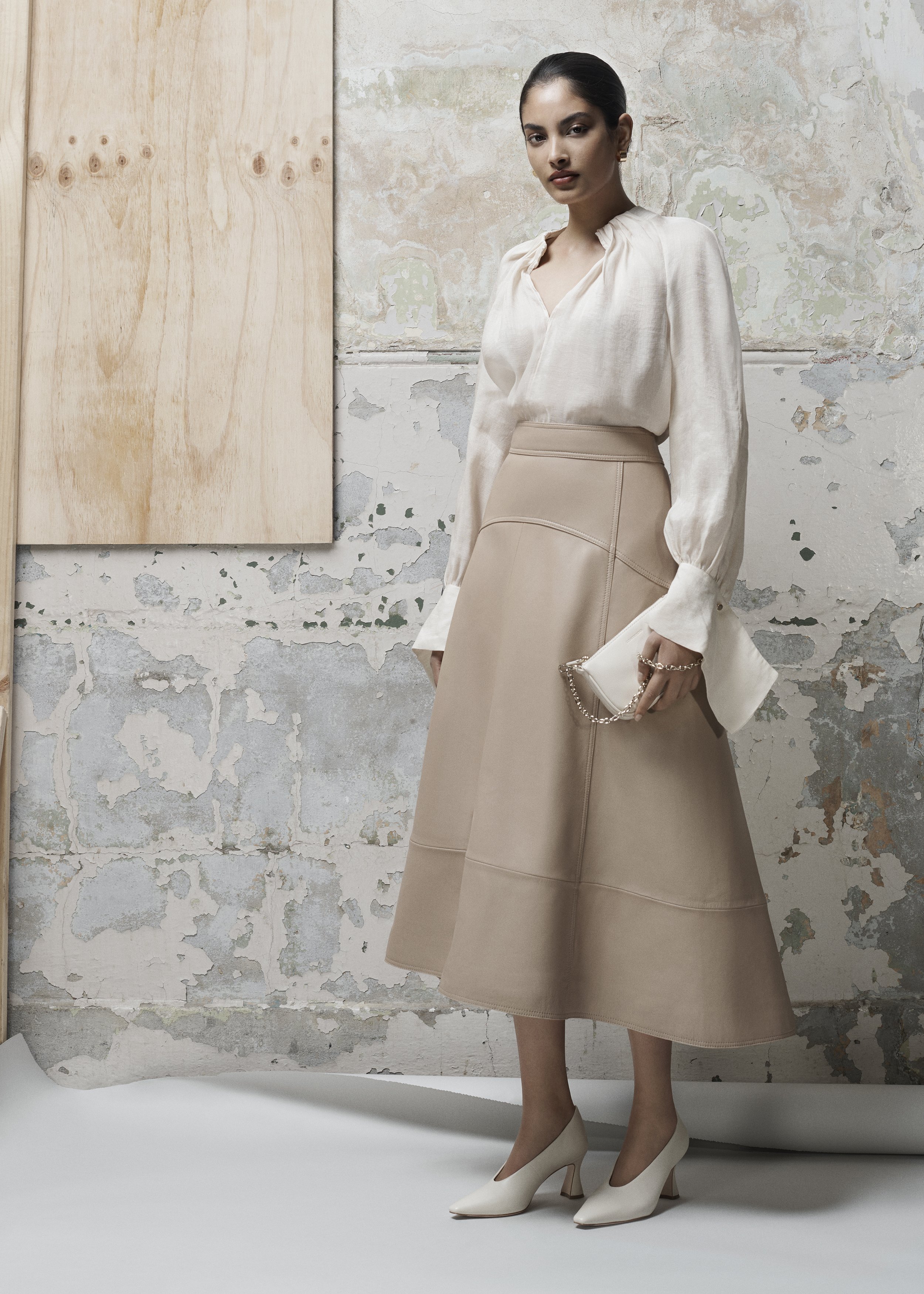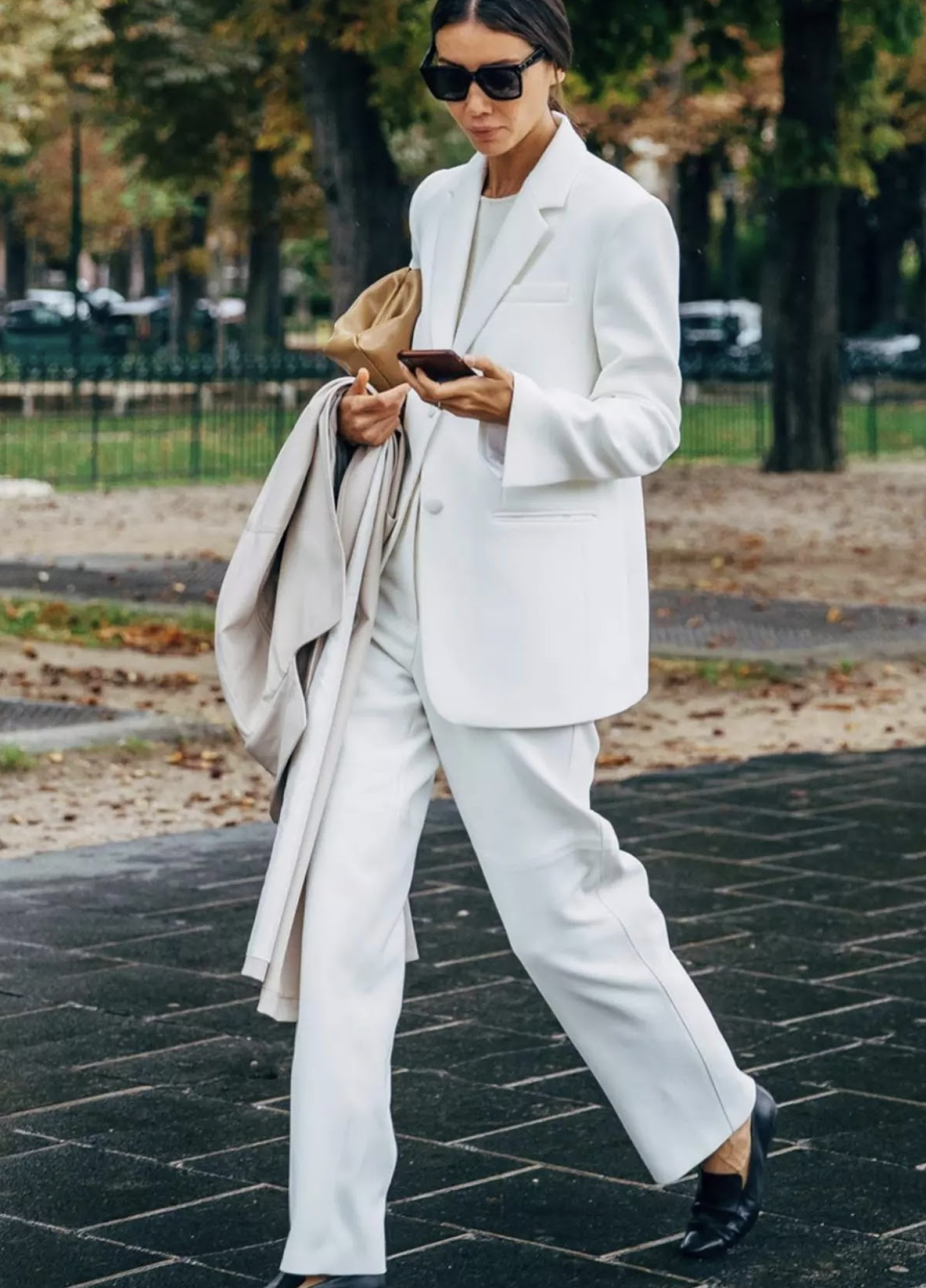Plump and smooth
Local beauty expert Leanne Cashmore from Cashmore Clinic reveals all you need to know about Botox and fillers.
Local beauty expert Leanne Cashmore from Cashmore Clinic reveals all you need to know about Botox and fillers.
After years of administering injectables, I’m surprised how many people still don’t know the difference between botox and fillers. Firstly, Botox® is a brand name. Other brand names that are widely used in New Zealand are Dysport®, Xeomin® and Neuronox®. They all fall under the umbrella of neuromodulators (muscle relaxants).
But what is a neuromodulator? A neuromodulator is a tiny protein that blocks the communication between a nerve and muscle cells. As a result the muscle cannot move. Don’t get too fixated about what brand to use – so long as you are going to a reputable clinic, you are in safe hands. The baseline ingredient (botulinum Type A toxin) is the same. The difference is their molecular makeup, but essentially they all achieve the same result.
Muscle relaxants are used to temporarily stop an expression that is causing the creases you want to get rid of: frowning, squinting, raising your eyebrows, pursing lips (also known as dynamic expressions). Once the expression is halted through a muscle relaxant, the creases soften.
It is also used for jaw clenching (TMJ) and excessive sweating (hyperhydrosis). Neuromodulators have been used in the medical field for all sorts of conditions outside of beautification.
Now to understand more about dermal fillers. One example is Restylane®, but there are too many on the market to name them all. As an overall statement, they are used to add volume to an area that has lost volume, to lift the skin, lips, cheeks, chin, jaw, fine lines. The product is made up of a substance called hyaluronic acid that is already found naturally throughout our body. Our bodies produce less of this as we age. Once it is injected under the skin, the hyaluronic acid works by attracting water to the area, which causes the skin to plump out the wrinkles, hollows and folds. This can last a lot longer than neuromodulators – up to 18 months.
Both products work well together. Though there is only so much we can do with neuromodulators, it is becoming very popular to use as a preventative. But once we get to a certain age, losing volume in our face and elasticity in our skin is inevitable and dermal fillers and skin boosters, such as Profhilo®, are the best ways to improve this.
Don’t let the fear of needles get to you. It’s quick, easy and relatively painless. We can use anaesthetic creams to make it easier. The amount of people who say I wish I had done this sooner is far too common.
If you do choose either, or both, I recommend you go with someone
who has experience. We are regulated in this country so only medical professionals can inject. I myself have worked in a private practice dermatology clinic for nearly 21 years. This was after completing an 18-month internship at Tauranga Hospital shortly after graduating from nursing.
While working in dermatology, I specialised in appearance medicine.
Here I learned about injectables and everything about skin, skincare, and
what works from the best in the field. They taught me everything I know and I’m forever grateful for that experience.
After my children had grown I decided I needed to learn some new skills.
I opened my own business in 2018, which went very quickly from renting a small space with a hairdresser friend to buying my own building and having staff to help me. I concentrate on all the injectables and I have a nurse, Ann, who does everything skin, peels, needling and PRP, with lots of new treatments on the horizon.
Keep an eye out for my columns in UNO, where I’ll be giving you the lowdown on everything from skincare to cosmetic enhancement.
Remember, when you look your best you feel your best, and summer is
right around the corner!
Botox®, Prescription Medicine for the treatment of frown lines and crow's feet. Botox® has risks and benefits. Botulinum toxin type A 50, 100, 200 units. For product information check
with your doctor or consumer medicine information on www.medsafe.govt.nz. Allergan, Auckland. Restylane®, Medical Device Class lll to smooth facial wrinkles and enhance lips by restoring volume and fullness. Restylane® has risks and benefits. For product information check with your doctor or from product details with the supplier. Galderma, Auckland. Dysport®, Prescription medicine for the treatment of frown lines and crow's feet. Dysport® has risks and benefits. Botulinum toxin type A 300 or 500 Ipsen units. For product information check with your doctor or Consumer Medicine Information on www.medsafe.govt.nz. Click for further details. Galderma, Auckland.Shape of diversity
An inclusive beauty and body-shaping studio in the Mount is redefining body confidence.
An inclusive beauty and body-shaping studio in the Mount is redefining body confidence.
Words Hayley Barnett
Photos Salina Galvan
When hairdresser Rāhera Haaker lost 30kg three years ago after the birth of her daughter, Layla, she was left with a “mum pouch”.
“Anyone who’s had a C-section will tell you those pouches can be stubborn,” she laughs.
She tried everything from changing her diet to including daily intense cardio into her already hectic schedule, but nothing seemed to help minimise her bump. At the time, she was living in Australia and had heard about fat freezing, so visited a nearby clinic and ended up with incredible results.
A short time later she moved back to New Zealand and sought out one more treatment, but soon learned it was much less accessible in her home country – in more ways than one.
“My whole kaupapa with anything in life is inclusivity,” explains Rāhera (Ngati Whakaue/Te Arawa). “There's a huge part of the beauty industry that’s not marketed towards minorities. And that’s minorities in terms of sexuality, cultural background, financial status, and social status. Salons and beauty treatment centres often don’t provide a space that everyone feels comfortable coming into. It’s 2023, and it’s time to market these things to everybody.”
And so Rāhera set up Āhua Studio in the centre of Mount Maunganui, offering Thermal Shock Fat Freezing (cryolipolysis) and Body Sculpting treatments. Having worked as a hairdresser for 13 years, she also runs her hair salon out of the studio.
Through her hairdressing, Rāhera has grown a loyal client base who are attracted to her down-to-earth, non-judgemental approach.
“A good portion of my hairdressing clients are on the spectrum or queer,” says Rāhera. “I like creating a supportive environment for people who might not feel comfortable in traditional spaces. It’s providing the little things, like our booking system includes an option for people to add their pronouns.”
Though she caters to minorities, Rāhera has watched the growth in popularity of Thermal Shock Fat Freezing across all social groups, races and genders.
The non-surgical procedure removes stubborn fat from any part of the body using a technology that delivers a series of temperatures from hot to cold to hot, to shock the subcutaneous fat cells, causing them to permanently die. The dead fat cells are naturally disposed of over subsequent weeks through your lymphatic system.
The treatment process is painless, requires no anaesthesia, and your skin is protected from the risk of ice burn with a medical-grade gel pad.
A typical session lasts up to one hour and it takes around 14 days to see results. The number of treatments depends on the person.
“It really depends on the buildup of fat and the size of the area,” says Rāhera. “Also how active someone’s lymphatic system is, and their dedication to diet and exercise at home. If it’s a little buildup of fat and they eat really well, drink lots of water and are still regularly exercising, one treatment will probably be enough. For larger pockets of fat, and when the diet isn’t the best, with not a lot of water, they would potentially need a couple more treatments.”
One treatment reduces up to 47 percent of fat cells and results are permanent. The results typically show from 14 days and continue to show for up to 90 days.
Her second offering, body sculpting, targets large muscle groups using Teslasculpt HIFEM technology. It sends electric currents to the muscles, causing concentric contractions. Its primary focus is muscle building with fat loss occurring the same way lifting weights would reduce fat in a certain area.
“It’s the equivalent of doing 36,000 situps or squats in 30 minutes,” says Rāhera. “It tones and builds muscle while dissolving fat.”
Both treatments work for anyone, but the sculpting is designed for those with smaller areas of stubborn fat.
But, regardless of your fat buildup, and no matter your gender, sexuality, age, race or social standing, you can rest assured Āhua Studio will welcome you with open arms.
And it seems the machines don’t discriminate either.
“I’ve seen amazing results in many different people,” says Rāhera. “It doesn’t happen overnight. It happens gradually each day, but after one treatment, whatever the size of the area, you’re definitely going to get
great results.”
Ahuastudio.com
Shine a light
An upcoming event shines the light on men’s mental health by demonstrating that it’s braver to seek help than to tough it out alone.
An upcoming event shines the light on men’s mental health by demonstrating that it’s braver to seek help than to tough it out alone.
Words Liz French
Zane Munro
For too long, Kiwi culture has celebrated the tough guy. While women have felt free to seek help from friends and professionals, men have bottled their problems. If they expressed vulnerability or showed their emotions they risked being told to “harden up”.
With one simple word and a lot of support, Cassandra Hogan intends to help change perceptions about how men deal with their mental health. The event on October 13 that will put the focus firmly on the male state of mind is simply titled: he.
The pendulum is gradually swinging, but not fast enough, says Cassandra. As a certified life coach, she sees far more women than men, but she also gets to talk to men more deeply than many. “I’ve got a lot of guy mates,” she explains. “If they confess to me that they are finding life hard and I ask what they’ve done to get help, the answer is usually… nothing.”
Kenrick Smith from rake Healing with one of his mammouth artworks
Awareness that the men she talked to were just the tip of the iceberg, Cassandra germinated the idea that has evolved into he. And it’s got bigger than she anticipated.
While keen to facilitate an event about men for men, she knew it needed to be by men as well. Cassandra only had to put the word out to influential males in the mental health arena to have speaker offers flooding in.
Zane Munro is a speaker who is upfront about his struggle with depression, anxiety and feeling isolated. He says that the birth of his son five years ago was the impetus for the men’s mental health support group, For All The Brothers: “I didn’t want him to grow up like this.”
For All The Brothers provided a platform where blokes could comfortably share their experiences. It took off on social media (40,000 followers on Instagram!) and there are now branches in many centres. It has organised men’s walks all over New Zealand and Australia. “It’s easier to talk while you are walking side-by-side,” Zane points out.
Cassandra Hogan
Cassandra is an ambassador for The Shaka Project, an Australian initiative to ignite the conversation around mental health. Sean Weir from Shaka is coming to talk about the benefits of connection, mateship and brotherhood. Shaka was inspired by a dad’s love for his kids and his friends, something Kiwi men can certainly identify with.
Tai Tupou from Hamilton will also be an inspirational speaker. He experienced a downward spiral when a broken ankle axed his chances of playing league the day after selection. He represents The Last Chance Project, supporting men with burdens from haunting past issues to everyday pressures. The Last Chance Project provides a safe, healing and nurturing environment for men to walk positively into the next chapters of their lives.
Kenrick Smith is better known for his pictures than his words. Kenrick started drawing in the sand during lockdown as an outlet for his energy. So began Rake Healing, which creates mindfulness and calmness by putting artistic lines in the sand. Kenrick’s greatest pleasure is helping individuals fulfil their potential. If it’s fine on he. day, his work will appear on the beach outside the venue, Mount Maunganui Surf Club.
Co-ordinating he. is a big job for a woman with a business and a young family. Cassandra gratefully acknowledges her supportive family and friends and the assistance of Kim Brown of She is Unleashed, a networking group for self-employed women. Both women stress that while they are ensuring he. happens, this is the men’s do.
Serious action does not mean acting seriously. he. is planned as an evening of open sharing, laughing and realising others have your back. The Surf Club will create an intimate atmosphere in an inspiring location. Attendees get a drink as they arrive and dinner is served between speakers. Sponsor enthusiasm ensures the goodie bags will be very good! Women are welcome whether as partner, friend or interested supporter.
Well known sportsmen are already lining up to be involved in the next
event. “Next!” laughs Cassandra. But her supporters are already talking
about he. becoming a regular event and spurning spin-off groups.
The he. event will take place on October 13, 5.30pm at Mount Maunganui Surf Club. For more information, head to the Facebook page:
In the ‘hood
Kids can have big emotions. Simple self-care for parents helps find and lend kids our calm.
Kids can have big emotions. Simple self-care for parents
helps find and lend kids our calm.
Words Holly Brooker, Parenting Place
Parenthood is an incredibly fulfilling, beautiful journey, but it can also be one of the most challenging experiences. During times of high stress, it’s important we care for ourselves and build our own reserves so we can manage the stressors we face, and be present to support our tamariki. It’s like the safety message we hear on planes: Put your own oxygen mask on first.
Fitting in self-care
Life as a parent is incredibly busy. But self-care doesn’t have to be the luxe pampering you see on Instagram. It can be the small things, little and often, to achieve balance, like refraining from starting that gripping Netflix series at 10pm. Getting a good balance of fruit and veg (and no, the “grape juice” that goes quite well with Netflix doesn’t count as fruit). Moving your body, even if a daily five-minute walk around the block is all you can manage. Or snatching two minutes of silence during times of high stress to process the triggers you might be feeling.
Creating space for ourselves is an important tool to help ensure we are able to keep calm during periods of stress, so we can provide our kids with the emotional stability and support that they need.
Our kids need self-care too, with a gentle balance of sleep, good food, movement, and play. Consistent routines, exceptions and boundaries increase our child's feelings of safety and security, especially during times of extra stress and uncertainty.
Expect the unexpected
If there is one given in parenting, it’s that our children will have big emotions and big behaviours – often when we least expect it (like when we’re running out the door, already late). Big emotions can make children feel out of control. Children generally express themselves through behaviour rather than words, and sometimes that behaviour can be pretty confronting and loud.
Hence the need to look after ourselves first, so we’re well-resourced to be a cushion for our kids when their big feelings erupt. This is when our kids really need us to help them find their calm – we can lend them some of ours, but only if we can prevent ourselves from having our own emotions triggered by their big feelings.
Pause, reflect, engage
“Pause, reflect, engage” is a simple strategy to help reduce the brain’s threat level, enabling our prefrontal cortex to do the work it was designed to do. It’s particularly helpful if you’re struggling with additional stressors as well.
“Pause” is about stopping and taking a slow, deep breath (or 10!) in a stressful situation. It really is just about breathing. Oxygen is a gift to the brain and nervous system, and a very quick and effective way to calm things down a bit.
When we “reflect”, we gather information about and from ourselves, as well as from our surroundings. We use “reflect” with empathy to notice our thoughts and feelings based on the situation we’re in.
We do this by asking the following questions:
Name the feeling you are experiencing. It might be, “I feel frustrated.” No judgement, just acknowledgement.
Now consider, what might my child be feeling? “They seem to be feeling sad.” Accept where they are at, without judgement. “Those are their feelings, and that's okay.”
Consider the why? “I’m wondering whether I’m feeling so frustrated because they are making me late to work by mucking around?” or “I’m wondering if he could feel sad because I’m getting snappy and grumpy?”
Now we “engage”. Once we have that information, we can use it to better understand ourselves, our kids and the situation, and we can plan of how to move forward together. A simple, sharing conversation could be enough.
“When you and I were arguing before, I noticed that things were getting out of hand. So I just needed to stop and take a breath. When I did, I realised that I was feeling really angry and frustrated. Then I thought, well, maybe you felt angry too, maybe even sad because we were arguing? I don’t like feeling that way and I’m sure you don’t either. I’m sorry that it happened. There must be some way we can work this out. Let’s give it a go.”
This simple process of understanding our triggers and emotions, as well as our kids, and sharing these through conversation can provide a healthy process of connection.
Our children’s behaviours can be so big and intense that it is difficult to see the emotions underneath. When this happens, we are easily drawn into their emotional turmoil. But if we approach them with an attitude of empathy, compassion and understanding, we show them that their relationship with us is more important than their challenging behaviour. It might be a work in progress, but it’s always progress when you're moving toward connection at the forefront.
Team spirit
Twisting, tumbling, flipping, flying… Competitive cheerleading has a strong foothold in the Bay of Plenty.
Twisting, tumbling, flipping, flying…Competitive cheerleading has a
strong foothold in the Bay of Plenty.
Words Hayley Barnett
Photos Quinn O’Connell
Cheerleading has always been known as an all-American cultural activity of sorts. A way to provide overly enthusiastic encouragement to sports teams and “cheer” them on to victory. But in recent years, the way we view cheerleading has completely changed, thanks in part to the highly-acclaimed doco-series Cheer on Netflix. Watching the agile young athletes twist and turn, we were all reeducated on what it means to make it as a true professional cheerleader.
Cheer, which premiered in 2020, offers a glimpse into the cutthroat world of pro college cheerleading and the sheer hard work and athleticism required to make it to the top. What you might not know is that, for the past 10 years, the Bay has been training its own cheer talent in the form of Bay Twisters Cheersport.
Offering competitive and non-competitive cheerleading from the age of four and up, the local club, based in Judea, Tauranga, has more than 140 students. Rebecca Grigson, alongside cheer champion daughter Anna, trains their students to compete both here and on the world stage.
“Anna started doing cheer in Auckland from a young age,” explains Rebecca. “Then we moved here to the Bay and there was nothing. I was worried she’d miss out on cheerleading, so one day I just said, ‘How about we try doing something on our own?’ It was crazy, but it worked!”
Today 22-year-old Anna, who has been doing cheer for 15 years, is on three cheer teams – two representing New Zealand and one being the
Top Gun All Stars team in the United States.
CELEB POWER
When Rebecca got in touch with US cheer team Action Cheer, the opportunity arose for Cheer Season Two star Jeron Hazelwood to fly in from Texas to train the young students of Bay Twisters. He was tasked with choreographing a competitive routine for 99 girls at Tui Ridge in Rotorua earlier this year.
Asked how our Kiwi cheer world differs from the all-American version, Jeron answers it’s not that much different.
“There are a lot of different rules and regulations around safety and that kind of thing, but all in all it’s not that much different,” says Jeron. “It would be good to see some more boys involved, but we have that problem in the States too!”
Jeron says the key aspects he loves about the sport aren’t just physical.
“Although I love being the show pony as much as anyone else, the best thing about cheer is that it teaches you not only physical strength but mental strength as well.
“Over in America, we don’t really care for crybabies,” he laughs. “It can be a bit of an eye-opener for some people.”
Rebecca insists Bay Twisters is not quite working to the same extremes as Cheer in terms of pushing the envelope.
“We haven’t had any serious injuries!”
Cheerleading has finally been recognised as an Olympic sport globally, but Rebecca says, in New Zealand, it still has a long way to go when it comes to recognising cheer for what it really is.
“To be officially recognised as a sport at the Olympics, after so many years, that was an amazing feeling,” she says. “People still think it's all about pom poms and short skirts at rugby games, and it does my head in. When people say it’s not a real sport, I say I'd like to see them go out on the floor for two-and-a-half minutes and do the routine that these kids do. We're slowly getting there, though.”
Style status
Keep cosy but cool with key elements this season
Keep cosy but cool with key elements this season.
Words Nicky Adams
LAYER UP
Winter is the time when fabrics really come into play. Texture adds a whole new layer to any piece, so the distinctive look of mohair, or the sheen of silk or satin can take an outfit to the next level. Wool is at the fore in its many forms, and a modernised Fair Isle jumper is a cool retro aesthetic. Match with a pair of leather pants and chunky boots, or a statement sweater in cable knit or an on-trend colour (there are greens and pinks galore), and you have an outfit that breezes from day to night. If a jumper feels like too much of a temperature commitment (no one wants to feel trapped sweating it out on a mild Bay day), then consider a cardigan. Versatile to the end, it’s the ultimate seasonal sneak piece as you still get to showcase the outfit beneath.
Wrapping up in something snuggly has never been more acceptable with the post-pandemic love fest for leisurewear. A determination to prioritise comfort has led to a burgeoning market for anything you feel good in. Meanwhile, a solid staple that’s hit the big time this season is the white shirt – with the potential to be styled in multiple ways, it’s a foundation piece that you can’t do without. Winter accessories are surely the most gratifying, and this year the bigger the scarf, the more on-trend. A lightweight version comes into its own with its ability to double as sleek outfit accent and draught excluder when you get the seat no-one wants next to the open office door
Mulberry Bronte Bag $85, for stockists contact antlernz.co.nz
Principessa Dress, $570, twentysevennames.co.nz
Cable Knit Fair Isle Sweater, $299.95,
scotch-soda.com.au
Geo White Shirt, $269, Chartreuse Sailor Jeans, $289, nz.kowtowclothing.com
Peter Alexander Knit Check Cardi $99.99, peteralexander.co.nz
Easel Combat Boot, $400, mipiaci.co.nz
Garica faux leather pants, $255, urbanvogue.co.nz
Green Abstract Leopard Scarf $39, for stockists contact antlernz.co.nz
TRENDING NOW
Most wanted this season.
Unpack the partywear
Looking polished in winter always feels like a bit more of an effort – but the dazzle can still be worked into the outfit, just in different ways. The most obvious route is via your outerwear – a stylish, quality winter coat or jacket is an investment piece that will not just elevate your look but will be with you to the end. When you’re going glam in winter, you want hard-working multifunctional looks that will translate just as well at a milestone birthday party as a black-tie event. Balancing statement with staples is easy
to achieve with an on-trend maxi dress or skirt. Full-leg coverage makes this the ultimate cold-weather piece that can turn its hand to a host of different looks. Style with a blazer or larger-than-life faux fur for a super cool classic silhouette, or throw on a low-key jacket for contemporary. Plush textures are going strong, so don’t shy away from a furry, feather or shearling aesthetic. To extend your looks still further, consider winterising items in your wardrobe by incorporating layering pieces. Fine knit merinos or turtlenecks will slip under dresses and can be styled either to blend in or as a contrast.
Ruby Ariel Dress $329, rubynz.com
Nautica Ring $379, silkandsteel.co.nz
Curtis sleeveless Blouse $199,
rubynz.com/collections/liam
Scarf Mini Skirt $519 (limited edition), zara.com/nz
Nautica Hoops $269, silkandsteel.co.nz
In your element
The scarf trend has crept into clothing and can
be found incorporated into everything from coats to skirts. Embellishments are key; however, it’s worth thinking about the type of event before you commit to a look – stand-up versus sit-down can be more of an outfit barometer than you think (hours on a seat-full of sequins can be prickly). Instead tie these aspects in other ways. A black ankle boot will be a wise investment, good with maxis and pants, a sleek slimline heel makes this the perfect footwear to swap in to replace ankle-baring heels. If you’ve opted for a minimal design outfit then top the look off with an evening bag with extra va-va-voom; high shine or intricate detailing is a sartorial win.
Angel Feather Jacket $499, stormonline.com
Cashmere oversized sweater, honeydew,
$859, standardissue.co.nz
Darcy Suede Boots $490, scarpa.co.nz
C/MEO Reciprocate Mini Dress $349,
cocowellington.co.nz
Brie Leon Antonia Bag $250,
paperplanestore.com
COLOUR ME PRETTY
Work out which shades will light up your life. Words Nicky Adams
While we live in a time of obsessing over miracle creams and tweakments, the more achievable secret to looking our best is far simpler and lies not in a needle but in our wardrobe. For men and women alike, some colours will quite literally take years off you by visually brightening your skin tone. Others will suck the very life force from you.
Deciphering the colour palette that best suits your skin tone is not an exact science. A professional colour analysis is one way of doing it, or you can DIY it by holding up different colours close to your face to see which give you a lift. No matter how light or dark your skin is on the outside, cool, warm and neutral undertones are the colours that come through from under the surface of your skin. By looking at the veins on your wrist you may be able to work out where you sit. Blue or purple veins indicate a cool skin, green means warm. If, like me, you have spent lots of time staring at your veins but remain none the wiser, it might be that you sit between both and are neutral. Another tried-and-tested way is by looking at your jewellery or watch; silver looks good on cool skin tones, while gold flatters warm tones. Failing all these methods, most people will know how they react to the sun’s rays – warm undertones tend to tan, cool will burn more easily. While hair colour is no clear-cut indicator, generally the darker your hair, eyes and skin, the brighter the better, whereas naturally fair of skin and hair will find pastels and paler shades complement their features.
Once you’ve got a baseline of the shades that theoretically flatter you, don't be too literal. It’s very common to simply dismiss a colour and all the shades that lie around it when armed with the perception that the base colour does not suit you. However, different hues within the colour wheel can be subtle to the eye yet throw off a totally different look. Using white as an example, the wrong hue can easily make you look washed out – while pure white looks fabulous on cool complexions, a shift to ivory makes it stunning for warm. So, if there is a colour you’ve mentally banned, try again with an alternative that sits in close proximity.
If you’re reading this with a view that it’s irrelevant because “one size fits all” black is your go-to, then I have bad news. Black has long been considered the safe option, but for many complexions it can drain all the colour from the face; worse still, it can cause shadows that pool in those fine wrinkles, which of course is more obvious as we mature. If this is the case, you might find that swapping out black for navy is like switching on an internal light.
Once you’ve found those shades that really make an impact, don’t be scared to dial it up a notch. As we mature, vibrant colours become a statement. We’re in a fashion moment where dopamine dressing rules supreme - nevertheless, if you simply can’t make your favourite colour work then don’t despair, all is not lost. The key is to keep it at a distance from your face, so anything worn from the waist down will work. Equally use the colour to build on to accessorise with bright heels or matching bags.
Cool dressing
Pink or bluey-red undertones tend to blush more easily. Aim for bright greens, purples, bold and pale blues, jewel tones, cool greys, crisp white and sea shades.
Warm wearers
Yellowish or olive undertones look good in earth colours. Try greens, browns, warm reds, orange, peach, coral, yellow, taupe and off-white.
Neutral undertones
You suit a variety of hues and shades and can get away with most colours, so wear what makes you feel best, but be careful of bright colours.
Universally flattering colours
Anyone can wear these, whether you're cool, warm, or neutral, so don't be afraid to go bold with true red, teal and dark purple
FASHION FORECAST
Get ahead with the latest spring fashion trends.
What Lies Beneath
Lingerie-inspired looks have left the bedroom and will be hitting the high street. Think corseted tops and beautiful satins along with sheer fabrics and luxurious lace trimmings. The ubiquitous slip dress will be seen with lacy accents, and pretty camisole tops abound. To be this slinky needs confidence, and this trend is a something of a twist on power dressing.
A New Angle
Well, hold onto your hats – flattering and relatable? Surely not! Asymmetric hemlines are big for spring. This look lends itself to a fabric with movement and ruching along the seam; both aspects make this super easy to wear.
Shine Bright
Silver is coming out as leader of the metallics. A little more discreet than gold, it can be toned down to pewter, and slides into daywear with ease. Meanwhile, lime is the shade that will sing spring from the low-sheen colour chart. Refreshing and with a range of tones suited to most people, it’s a bold choice, but one that signals summer is on its way. With a colour this vibrant, the design is best pared back to let the hue do the talking.
Ethereal Beauty
Sleek draped dresses and skirts – dreamy, goddess-like and the new romantic on the runway. Avoid looking too costumey by keeping accessories to the minimal. It’s a soft, undone, and with its pleats and gathers in all the right places, very flattering look. It’s also a style that can be played around with for day wear, but translates easily into sultry evening attire or sophisticated event wear. The Greek goddess look is the ultimate classic.
Sole searching
Mount Maunganui photographer and creative Tasha Meys, better known on Instagram as @tastefullytash, shares her top winter footwear picks from SOLECT.
Mount Maunganui photographer and creative Tasha Meys, better known on Instagram as @tastefullytash, shares her top winter footwear picks from SOLECT
Boots in
“A high-quality black boot is a staple in my winter wardrobe. Pair with jeans, winter dresses or smart trousers.”
Timberland Cortina Valley Chelsea Boot $360
Cream please
“I’m all about a sneaker which works as well for a run up the Mount as it does with jeans for a casual vibe.”
ASICS Gel 1130 $190
Cosy toes
“These pink sheepskin slippers feel like a fluffy hug for my feet. Snuggly indoors yet easy-wear outdoors due to their hard soles.”
EMU Australia Mayberry Slippers $80
Shear comfort
“A shearling-lined cold-weather version of these classic Birks is a dream. Wear with cute socks for extra warmth. They feel like slippers but are totally acceptable to wear in public!”
Birkenstock Arizona Shearling $350
Star turn
“I love that the lift gives you that extra bit of height! Leather is warmer than the canvas version, so perfect with jeans for cooler days, or a dress and trench for an evening look.”
Chuck Taylor All Star Leather Lift Low $150
Support local
“Alongside a black boot, I love a brown boot in winter for a softer look. Ideal with blue denim and a white shirt.”
Chaos & Harmony Montreux Boot $390
Under pressure
A revolutionary sensory therapy is bringing clients a deep sense of wellbeing and inner peace.
A revolutionary sensory therapy is bringing clients a deep sense of wellbeing and inner peace.
Words Monique Balvert-O’Connor
Desiree De Spong loves how her working life is strongly focussed on offering people the chance to be wrapped up and supported, to feel warm, relaxed, calm and even healed.
All that is possible thanks to Desiree’s knowledge of the body’s lymphatic system and her associated desire to help facilitate life-changing results for a variety of people.
The Tauranga woman is a lymphatic specialist and developer and designer of Flowpresso®. Flowpresso, Desiree explains, is a sensory therapy system designed to reset the body’s physiology to support healing and general health.
The system is a result of Desiree’s desire to combine holistic therapy with scientific rigour, driven by a conviction that lymphatic therapy offers “a missing link in health”.
Essentially, Desiree tells, Flowpresso the product is a special bodysuit – one that comprises individual chambers that inflate in sequence and cover the legs, abdomen, arms and torso. It is non-invasive natural therapy, with reclining clients remaining clothed while enjoying a sensory treatment based on compression, thermodynamic heat and deep pressure (“pressure of a good kind”). Hence the feeling of being wrapped up, hugged and calmed.
Among those endorsing the suit is our constabulary. A research study, which involved 135 first responder candidates, showed the suit improved sleep by 92 percent, reduced stress by 63 percent and reduced anxiety by 55 percent. The WBOP Police became early adopters – that was two years ago – and remain users. Following their lead were other first responders, such as nurses and firefighters – people dealing with community stress and then their own. Referrals also come from counsellors, psychologists and others within the health field.
So, what’s the magic behind this suit? Flowpresso’s purpose is to release toxins, switch off the body’s fight-or-flight mechanisms, and encourage a rest and repair state, which is the optimum state required for a body’s healing process. Time in the suit once per week for three weeks is recommended.
For Desiree, Flowpresso is the realisation of her dream to create an evidence-based therapy that helps with mental health and sleep crisis.
It’s a field that’s a far cry from what she did in her “past life”: She worked in IT and finance for the NZ Fire Service.
“I made the change as I wanted to be involved in something that helped people. I became spellbound when I attended workshops in lymphatics. It was like a lightning bolt moment, as I saw lymphatics as the missing
link in health,” says Desiree, who went on to train in the USA and Australia.
She’s been a lymphatic specialist for two decades now, constantly building upon what she can offer. Flowpresso is a relatively new development, resulting from extensive worldwide study of existing technologies and their efficacy. This keen entrepreneur soon realised she would need to design an effective device and develop an initial prototype.
The first Flowpresso suit was manufactured only four years ago. Updates and refinements followed and the full Flowpresso system was launched in February 2020 with support from NZ Trade and Enterprise.
Close to 500,000 sessions per year are going on in the world now, Desiree tells. Exports are predominantly to the USA, Australia and the outskirts of Europe. In the USA alone, the suits are used in about 240 clinics and donned by those in law enforcement there too. Desiree has been hosted on a couple of occasions at the NZ Embassy in the USA to speak to those involved in defence, homeland security, law enforcement and firefighting.
Back home, Desiree and fellow wellbeing advocate Karen Gemmell, own Neuro Bar (with Tauranga, Te Puna and Matamata clinics) where Flowpresso therapy is available. Other clinics have purchased the suits, so Flowpresso is available in various locations nationwide.
Creating something pivotal in facilitating people to experience positive change in their lives is the best thing ever, Desiree says. "It's heart-touching and I’m elated. Users talk about how relaxed they feel after a session – some hadn’t necessarily realised how stressed they were. People say they’ve noticed improved sleep quality and energy, and a decreased stress response. Many feel they’ve been hugged all over.”
“Among other things, hugs release the feel-good hormone, but a lot of people don’t have access to hugs. And as the saying goes, we need four hugs a day for survival, eight for maintenance, and 12 for growth,” Desiree smiles.
Turning heads
A stylish new salon in Te Puna makes waves.
A stylish new salon in Te Puna makes waves.
Words Nicky Adams | Photos Jahl Marshall
Opening its doors at the end of last year, Kevin & Co is a new hair salon based in the heart of Te Puna village. With its stunning fresh décor, wooden accents and spacious layout, the aesthetic is everything that owner/founder Amanda Sutton had envisaged when she set out to create a calm space where clients could relax and zone out.
Together with stylist/executive assistant and “right-hand woman” Hayley McCabe, Amanda has concentrated on setting the tone for a retreat-style salon. Using premium hair care products was hugely important to her, and she raves about luxury brands Oribe from the States and premium Australian haircare from Kevin Murphy.
“In the colour range, the Kevin Murphy tints are honey based and ammonia free, so they’re super soft on your hair, giving heaps of shine, and are nice and gentle on the scalp – which is really important for people these days.” In addition, when it comes to colours, it’s “hands down the best powder lightener I’ve used in my life, although their colours are really good across the board.”
I comment the brand must be good to have inspired the salon name – to which Amanda laughs: “It’s not actually after the brand; this tracks back to when I was a teenager, I’ve always wanted an English bulldog; his name was going to be Kevin, and he was going to be a salon dog – the salon just happened to come before the dog!”
Based in Hamilton until around five years ago, she moved to Tauranga, and met Hayley when they worked in a salon together. They formed such a great bond that when Amanda opened Kevin & Co, Hayley coming on board was a natural step. They are, says Hayley “very much a team.” They recognise the great synergy they share is important as they expand, which will be the next natural step. But while Amanda plans to take on more staff, maintaining the calm vibe remains central to her vision.
The atmosphere is zen, but the feel is modern. I wonder where each of their passions lie as stylists. Amanda says she thrives on finding that perfect hue for her clients – “I love anything colour related. I’ll figure something out for you – if it’s blonde, brown or copper – as long as I can make you feel good, I’m happy.” Hayley equally enthuses about the colour process, and she fizzes when she talks about blondes: “I love the transformation with blonde. It’s not just one shade – you can do so much with it – you can create dimension and you can make the client bright or creamy, cool, warm.”
They are both aware that part of hairdressing is being up to speed with the latest looks, although most “new” trends have been done before. “All the grunge, and the 90s is coming back – the wolf cut, undone, messy – it’s following the same curve as fashion.” I wonder what their dream style would be to create. Amanda would go for the total redo “100 percent! People do their best work when they are left to do it; bring in your inspo pictures and we’ll dive in and figure out what you like most out of each picture, but the creative freedom to bring it to life is amazing. I also love colouring, a lot of people don’t take into consideration eye and skin colour – all of that comes down to what kind of hair shade they should have.” Hayley, on the other hand, is all about the cut – “I love a good blunt long bob. If someone comes in and wants it, I’m like, ‘Let’s do it!’”
For those people who have tricky hair, or who may be reluctant to try a new style or salon, Amanda agrees it can feel like a big step. “We offer free consultations; for anyone who is second-guessing, that’s a really good tool. You can come and scope out the environment and space and see if you feel comfortable here – talk to the stylist, see if you form those connections. We would cover everything from past experiences, products used, styles tried, then we can hone in on what you’re after.” Excited about the journey, both stylists are committed to staying ahead of the curve. As Amanda rounds off, “The second you stop wanting to learn as a hairdresser, you should stop hairdressing”.
Amanda’s top haircare tips
Start with a good foundation, to make sure you get the best out of your new hairstyle. A personalised shampoo and conditioner will make dealing with your hair on a daily basis much easier.
Protect your hair when heat styling. Heat protection comes in many forms, such as a spray, cream or foam, and is essential to ensure minimal damage.
Maintaining colour between appointments is easy: For blondes, use purple shampoo, and brunettes, pigmented conditioner. Some shampoos even have UV filters to protect against sun damage.
Keep hair healthy with a weekly treatment. My favourite is a scalp scrub followed by a deep-conditioning treatment. It keeps my scalp happy and my ends lush.
Maintain long hair with a micro-trim every six to eight weeks. Taking off the smallest amount promotes health and ensures it grows happy and long.
Feel-good fashion
Sister boutiques Urban Vogue and George Edward keep fashion at the forefront.
Sister boutiques Urban Vogue and George Edward keep fashion at the forefront.
Words Nicky Adams | Photos Salina Galvan
Buying clothes is a bona fide spirit lifter. There is joy (and adrenalin) involved in finding that perfect outfit, but a huge part of the experience is being comfortable and confident in your surroundings when you make those choices. Vicki Burns, owner operator of Urban Vogue and George Edward in Bethlehem, and her team are exactly the sort of people you want to be there to help with those – sometimes complicated decisions.
Despite 30 years in the industry, Vicki has not been caught up in the smoke and mirrors of the fashion world. What drives her is knowing that her customers can enjoy all the attractions of a boutique surroundings but have access to attainable but individual pieces. With her own style leaning towards a casual steampunk aesthetic, what Vicki loves is that she has found her niche in the market by bringing her client base a range of looks that are influenced not by her personal preference, but by good style and high quality rather than moving trends. In fact, she tells me, her best feedback is when customers come back and say, “I’ve thrashed that piece – can I have something similar?” Not, she laughs, the best business model in a trend-led industry.
Her small team are, like Vicki, there to help with their considerable experience and expertise, rather than to tell people they look good to secure a sale. The success of this ethos is reflected in the fact that the majority of the two stores enjoy predominantly repeat custom. The team have mostly been with Vicki from the very beginning, or the early days. Urban Vogue was established 16 years ago when Bethlehem Town Centre was developed, and Vicki took over George Edward a year or so later. She finds it works well having the two stores so close together. There’s a slightly different emphasis on stock, with Urban Vogue catering to those looks that you won’t find elsewhere, and George Edward leaning more towards classic, modern chic. But with the same staff working between the two shops and having knowledge of the entire stock, there’s a synergy that means customers have the benefit of a far more extensive pool that they would first have thought. The team of Kim, Sonia, Robyn, Megan and Donna all bring a unique skill set, from Sonia with her flair for individualism, to Megan who is an instore professionally trained colour consultant, able to assist customers with their best looks.
The concept of doing things a little uniquely filters from the looks to the interior design of the stores, specifically Urban Vogue, which has been set out in the style of wardrobes. Typically arranged by colour, it streamlines the process for the customer. Vicki holds that for the store her initial mission statement was “to develop a space where people could come and tell us the dog’s sick or the bird’s having its beak clipped
– I wanted a friendly space. For people to come and connect. And that’s what they did – and those people have carried on supporting us.” When it comes to the labels held in stores the idea was “trying to get things that were a little bit outside the square, but not to the point where it’s scary for the consumer.” Over the years the brand choices have evolved organically, as Vicki continues to strive for a feel of exclusivity – along with this, Vicki has her own unique spin on the styling of her pieces. This, she puts down to her personality. “It’s really good, because although there are other lovely independent boutiques locally, we’ve all got quite different personalities – and that comes through in our stores.” Along with the different looks is an emphasis on body inclusivity and wearability. “I want things people will wear above all else. I don’t buy for a fleeting trend; I buy for my customer. And they need quality and affordability.”
Vicki’s boutiques are well known for the fabulous fashion shows they put on locally – often for a charitable cause. She loves the community aspect of these and sees it as a way of giving back to her loyal customers as much as showcasing her lines. As someone uncomfortable with limelight and fanfare, Vicki is level-headed about the perceived glamour of the fashion world. Instead, she thrives on representing the ordinary woman in fashion’s extraordinary world. What she does love is “the changing landscape – you don’t know from one day to the next what you’re going to get out of the industry. I might not buy the passing trends if it’s no good for my customers, but I love to look at them, keep up to speed, to feel the fabric and know that the quality is being upheld.” For Vicki and the team at Urban Vogue and George Edward, the real joy is customer service, satisfaction and the camaraderie that fashion produces.
Matters of the heart
Anna Rolleston of Tauranga’s Centre for Health highlights the importance of protecting your ticker and keeping an eye out for any warning signs of heart disease.
Anna Rolleston of Tauranga’s Centre for Health highlights the importance of protecting your ticker and keeping an eye out for any warning signs of heart disease.
Photo Jahl Marshall
Did you know your heart is not just another organ in your body, but rather a life-sustaining force that keeps you going day after day? Unfortunately, heart disease remains one of the biggest killers worldwide, accounting for a staggering one-third of all deaths globally. But why are we still struggling to get a handle on heart health? Despite the alarming number of heart attacks that occur every day, many of us still underestimate the importance of taking care of our heart.
Your heart is the ultimate powerhouse that pumps oxygen-rich blood to every corner of your body. Without its proper function, your body simply cannot work at its best. Heart disease is an umbrella term that encompasses a range of conditions, including coronary artery disease, heart failure, and arrhythmias such as atrial fibrillation. These conditions can lead to serious complications such as heart attack and cardiac arrest, which can be fatal if not treated in a timely manner.
Did you know there’s a difference between a heart attack and a cardiac arrest? While these terms are often used interchangeably, they’re two entirely different things that can go wrong with your heart. A heart attack happens when there’s a plumbing issue caused by a blockage in the arteries that supply blood to the heart muscle itself. This can lead to symptoms such as chest pain, shortness of breath, and sweating. Cardiac arrest on the other hand can be likened to an electrical problem that results in a sudden loss of heart function. This can be caused by a heart attack, but also stems from underlying inflammation, trauma, or irregular heart rhythms. Cardiac arrest is a medical emergency that requires immediate treatment with CPR and defibrillation.
Knowing how to perform CPR could save someone’s life, and it’s an easy
skill to learn – you don’t need to be a healthcare professional, and I highly recommend taking a course.
It’s crucial to be aware of your risk factors for heart disease. Factors such as smoking, high blood pressure, high cholesterol, type 2 diabetes, a family history of heart disease, being overweight and inactive can all increase your chances of developing heart disease. However, even if you don’t have any of these risk factors, it’s still important to take proactive steps to protect your heart health. After all, your heart has to keep ticking for your entire life. Without proper care, you can’t expect it to function smoothly year after year.
Heart disease affects men and women differently. While it’s often thought of as a man’s problem, heart disease is just as significant for women. Shockingly, around 55 New Zealand women die every week from heart disease. It’s important to be aware of the key differences between
the sexes when it comes to heart health. For instance, women may be more susceptible to some risk factors, such as smoking. Women with diabetes are also at a greater risk of heart disease than men with diabetes. Furthermore, having a family history of heart disease can be a stronger predictor of heart disease in women than in men. Men are more likely to develop heart disease at a younger age than women, while the risk for women increases with a drop in protective oestrogen levels close to, during and after menopause. Women also tend to experience different symptoms of heart disease and heart attack than men. Symptoms such as nausea, indigestion, and back pain may be more common in women, which can make it harder to diagnose.
So if you feel something is off, you’re just not feeling right, and you have risk factors for heart disease or a family history, go and get yourself checked out.
A new era
Registered nurse Leanne Cashmore from the Cashmore Clinic has more than 26 years' experience in women’s skincare. Here she takes us through the challenges that menopause can have on skin, and what we can do to combat them.
Registered nurse Leanne Cashmore from the Cashmore Clinic has more than 26 years' experience in women’s skincare. Here she takes us through the challenges that menopause can have on skin, and what we can do to combat them.
Menopause can have a dramatic effect on the skin. Without hormones, our aging accelerates by around 30 percent. Because our skin is so visible, being the largest organ on the body, it is one of the areas we first notice the most rapid changes.
Often people tell me they feel like it happened overnight. One of the reasons for this is that oestrogen receptors are very abundant around the face and the decline of oestrogen is part and parcel of menopause.
Tell-tale signs can include thinning skin, wrinkles, skin laxity and dry skin, as well as hair loss, thinning of the hair and hirsutism (abnormal hair growth in women on the face).
The best way to treat perimenopausal and menopausal skin is to find a good skin therapist, and make sure it’s someone you can trust. Take a hormone replacement if your doctor recommends it for you, too.
There are many cosmetic options these days, including amazing bio stimulator hyaluronic acid dermal fillers that promote hydration. This involves basically injecting moisturiser into the skin and stimulating your own collagen by way of regular needling appointments.
Needling helps with tightening and minimising the visibility of fine lines, and it has been scientifically proven. So if you don't already do it, start now! The latest technology, Secret RF radio frequency needling, uses heat to tighten the skin and needling to cause collagenesis.
Peels and resurfacing treatments brighten the skin and diminishes
pigment and irregularities.
Platelet Rich Plasma (PRP) is another way to promote collagen. Your own blood is full of growth factors that can be injected or infused into the skin, to produce collagen for fine lines and thinning skin.
Low-level light therapy promotes skin rejuvenation by stimulating
collagen production.
Outside of the clinic, it’s a good idea to consistently stick to a skincare regime which includes lots of hydrating serums and moisturisers. Never use soap. Use a cleanser that is suitable for your skin and try to use a mild cleanser at night, which will allow serums and moisturisers to absorb.
Use an SPF daily, take oral supplements such as zinc and collagen powder, and adhere to a healthy diet while getting plenty of sleep and limiting alcohol and sugar. All these combined will have an amazing effect on the skin.
You can get away with ignoring these health principles when you're younger, but it's impossible after 40.
Treating your skin is a journey. It's maintenance that is no different to maintaining a car or a house. It’s no different to colouring your hair or
whitening your teeth. It's a commitment, and the changes don't happen overnight. If you’re considering using botox or fillers, a good canvas to work with is important.
We have to remember it has taken years to get our skin to get to where it is today, and it's going to take some time and patience to bring it back to life. But it's never too late. Small changes over a course of time make big changes to your confidence when you see the results.
Visit Leanne at Cashmore Clinic and have your skin analysed with the latest technology, Observ 520, or simply get some skincare advice.
An age of empowerment
When it comes to recent research around menopause, it’s become apparent that we don’t really have to go with the flow. UNO talks to two local experts, Dr Stacy Sims and Dr Linda Dear, about how women can take charge.
When it comes to recent research around menopause, it’s become apparent that we don’t really have to go with the flow. UNO talks to two local experts, Dr Stacy Sims and Dr Linda Dear, about how women can take charge.
Words + Styling Nicky Adams
Photos Graeme Murray
Hair + Make-up Desiree Osterman
Whoever said there were two certainties in life – death and taxes - missed out the third, menopause. Historically perceived with a similar gloomy acceptance as the other two, finally an increased conversation around menopause is encouraging the idea that women can have more control over the experience, along with a realisation that there has been a failure to support women in mid-life. Targeted research and, most importantly, a move to de-stigmatise what is not an illness, but a life stage, has brought a shift of this topic into the public arena. Now open discussions are taking place everywhere, from the boardroom to breakfast TV.
Part of the problem is the general confusion out there; add to this the masses of misinformation and myths and the subject becomes a hotbed that makes most of us just want to bury our heads in the sand. The traditional definition of the menopause would be that it is the last menstrual period a woman experiences as the result of the ovaries no longer producing eggs. A woman is considered to have gone through menopause if she hasn’t had a menstrual bleed for 12 months. The average age that women experience this is 51, but the last-ever period can occur between 45 and 55 and it’s still considered normal. However, the additional curveball is perimenopause: Typically, a woman will enter the menopause transition – or perimenopause – two to four years prior, although this can be for a far longer period.
As a starting point, for many facing the end of their fertile years, it can be an emotional mountain to climb. While there is the upside of the cessation of periods (and I doubt any female has ever lamented their loss), the essence of this event is that it signals a move to a different life stage. And one that comes with the additional slap in the face of feeling as though we are passing into the unpromising land of being an ageing female.
Perhaps this might explain why it’s so common to approach such an important time of our lives with trepidation or lack of preparation. Because, in fact, preparation is something that can transform the experience and, as our experts Dr Stacy Sims and Dr Linda Dear agree, ensuring that the menopause is managed will help navigate many of the unpleasant aspects.
We all know what those wee peskies are. From the hot flushes to night sweats, sleeplessness, anxiety, cognitive fog, aching joints, tiredness and lower sex drive. Oh, and thinning hair and abdominal weight gain (and if you’re lucky, across the bust as well). Of course, these are a lucky dip of blanket symptoms, experienced to varying degrees and lengths of time. The other tricky thing is that even though when put together, in conjunction with a change in your cycle, each of these symptoms can be easy to mistake for the side effects of being stressed, busy and suffering from “rushing woman syndrome”.
Body Matters
Mount Maunganui local Dr Stacy Sims has a PhD in Environmental Exercise, Physiology and Nutrition Science. She works globally with female athletes, runs an online educational program sourced by everyone from health care professionals to individuals, has written books, and presents and makes podcasts. Her qualifications and research have been built on over the last 20 years.
"I started looking at sex differences in extreme environments and the more I got into that, the more I realised how much wasn’t known," says Stacy. "So I ended up doing my post-doctoral work with the Women’s Health Initiative, the big US study that was looking at menopause hormone therapy.” That was in 2007, and her quest to change the perception that when it comes to exercise, nutrition and medicine “women are not small men” has led to her becoming one of the leading voices in this arena.
Stacy and I talk about the necessity to get ahead of the game when it comes to menopause, but with this comes the difficulty of recognising the signs and symptoms of perimenopause. There is a blood test that can be done, but this is deemed unreliable. “When you look at what’s happening in perimenopause, you have all these changes in the ratios of oestrogen and progestogen, so if you go and have a blood test and they’ll say your progesterone is low and your oestrogen is at this point, and your follicular stimulating hormone (FSH) is really high, so you must be perimenopausal,” Stacy says. “Then you’ll go back a couple of weeks later and you get your bloods tested again and you’re at a different phase of your cycle and your hormones are at a different level, and your FSH has dropped, and it’s like – oh, maybe you’re not. Because you have
to look at the trends, you can’t do a one-off blood test.
“What we can look at is how you’re sleeping, how you’re responding to exercise. Do you have any overt symptoms of vasomotor night sweats, what about your concentration? Do you have brain fog, are you to-the-core fatigued? There’s many different things, especially when women are in their late 30s, early 40s,” she continues. More key as an indicator are patterns within your cycle. “We also look at the menstrual cycle itself (which doesn’t help if you’re on the oral contraception pill), but if you look at the menstrual cycle you start to see changes in the bleed pattern, not necessarily cycle length, but you’ll start noticing nuances in your own unique bleed pattern.”
Critically, I wonder, how can you understand the signs if you’re not looking for them? “I always tell women they should be tracking their cycle,” Stacy explains. “Because then they start to understand how they feel throughout the cycle. The more you track, the more you can see: When you feel flat and when you feel good. When those individual patterns start to change, and we start to see a change in the cycle itself, that’s when you know something’s going on.”
Feeling helpless
“I always have women say, ‘All the training I’m doing isn’t working. I’m not adapting, I’m getting slow, I’m getting fat, I’m getting tired. I’m trying this diet and it’s not working.’ And it’s like, okay, we definitely know you’re in perimenopause,” Stacy says. “You have women who say, ‘I don’t understand. Three months ago I was really lean and thin and now all of a sudden – boom – I have an extra five or six kilos on my boobs and my stomach. So I say, your body’s really responding to this sympathetic stress from hormone shifts. There’s this wicked circle going on.”
Where it can feel confusing is that it’s easy to assume most of the changes will happen in the 12-month window that your body is winding down. Seemingly this is not the case; in fact, it’s happening prior. Stacy tells me, “All the body composition changes happen in about the five years before that one point of time of menopause. It can be 15 years that you’re having a whole bunch of irregularities, but we really see the major amount of changes and effects the five years before that one point in time. We call it late perimenopause.”
Train your body and brain
As both an academic and an athlete, Stacy is uniquely positioned to address the journey with women who want to regain control over their bodies, and indeed mitigate the symptoms, which in some cases can quite literally stop women in their tracks. And importantly, how do we get results? I ask what steps Stacy would recommend to someone.
“I want them to track how they slept, what kind of training they’ve done, how they feel, what their heart rate variability is. You look at that, and on the overlay of training we look at the training stress score and how they are adapting,” says Stacy. “And a lot of time they’re putting in the work and nothing’s happening – they’re like a zombie through it all. They might be training for a race; they might be training for life. They get up and go to boot camp and are going through the motions but are not seeing any difference; they’re just getting more and more tired. Even if they’re doing progressive overload and they’re following this program or they have a PT, but they’re just not getting anywhere.
“When we look at that we know we need to get you out of modern intensity work – the boot camp – and into true high-intensity work. If you’re doing true high-intensity work, it’s a different story. True high intensity is short, sharp intervals – think 85-110 percent of maximum effort – with an entire session including warm-up and cooldown not exceeding 35 minutes,” Stacy explains. “What gym HIIT classes do is put women in moderate intensity, an intensity that is too easy to have any kind of adaptive changes, and too hard to give you a boost to your parasympathetic drive and recovery. It just keeps you in this state that drives cortisol up, that keeps you tired but wired and signals you to put
on belly fat.”
The key, Stacy tells me, lies in true high intensity interval training. “This is one to four minutes at 85 percent or more of your max and you have a variable recovery in between. The longer the interval, the lower the intensity, and you might have one minute on, two minutes off, repeat – and you’re really taking those two minutes to really recover. So, if you’re running and your one-minute pace is a 4.5-minute kilometre, then your two minutes would be probably an eight-minute kilometre. You’re totally polarising them, so that when you go to do that next minute, you can hit that 4.5-minute kilometre again. You might do that four or five times and that’s it.
“Sprint interval training (SIT) is a subset of high intensity that women should really incorporate. SIT induces better body composition changes, metabolic and cardiovascular health. SIT intervals are no more than 30 seconds as hard as you can go, with enough recovery (two to four minutes) to allow you to hit it at full gas again – and you might do those five times. This is 110 percent – like running up three flights of stairs and you’re going redline, and then you’re dropping your heart rate. And if you want to keep on going up, you start climbing really, really slowly. Then once you hit that four-minute mark, you go as hard as you can again. The goal is that recovery is a central nervous system response. But if you’re holding that stress for 20, 30 or 45 minutes when you’re not really going that hard, your central nervous system never really learns that this stress is something that it can overcome.”
Sprint training can be multifaceted in its benefits. The options of testosterone for mid-life women in the form of gels or creams is a route some explore; however, as Stacy points out, through exercise you can form your own pathway. “The other thing that sprint interval training does is when you’re done with that parasympathetic response that comes later, you also get an increase in growth hormone and testosterone. And women’s testosterone often starts to plummet more with natural age decline, which is a conversation a lot of GPs are having – that is, do we do testosterone replacement or not? Do the sprint interval training, because post-exercise there is a natural boost of testosterone, IGF-1, and growth hormone.”
Where to begin
While the big rock for exercise at this age is resistance training, this is relatively terrifying for the non-sporty among us. I wonder just how this type of regime works for the women in this camp. “We always phase people in – this isn’t just a training programme. We’re looking at what we can do to maintain quality of life for the rest of your life. We want to introduce you into lifting loads – I want to make sure you move well; I want to see what your mobility is before you start moving loads. Resistance training is not just for lean mass, it’s also for brain health. Cardiovascular work is really good for increasing total brain volume and maintaining the grey matter, but resistance training is critical for that neural adaptation because it increases the nerve growth factor. So, it’s vital for attenuating dementia and Alzheimer’s risks because you’re developing new nerve pathways.”
Then there’s those who recognise they need a plan of action, but simply can’t find the time in their schedule. According to Stacy, all is not lost. “This doesn’t have to take a lot of time – it can take 10 minutes here or there. Get moving, get outside, do a couple of surges upstairs, or squat jumps or lunges or pushups – something for 10 minutes three times a week is the start. If we really want to make it work, we do jump training: Skipping, trampoline, running or hopping up your stairs. It’s all really good for your bones, and your bones really suffer in peri- and post-menopause.”
Food for thought
Of course, how we eat is a key aspect of this life change. “Nutrition is part of the whole evolution. Women become very anabolic resistant, so it’s hard to build and maintain lean mass. We need more regular protein doses throughout the day – palm-sized doses of protein (20-30g) with every meal, and then 10-15g in every snack, a handful of almonds or half a single-serve of Greek yoghurt. And as many colourful fruit and veg as we can. We want to take care of the gut microbiome through all the fibrous fruit and veges and help our body with neurotransmitters, lean mass and body composition through protein. Even if you don’t exercise, but you have a higher protein intake diet, you can completely recomposition your body over the course of 12 weeks. Protein is so powerful. It’s not just meat, it’s eggs, yoghurts, cheese, nuts and so on.”
Not just a hot mess
Dr Linda Dear runs MenoDoctor – a medical practice dedicated to giving extended holistic consultations to women experiencing perimenopause and menopause. The concept is “Medicine meets lifestyle – the best of science, the best of nature, for women to choose from – to help them know their options and come up with a recipe that’s going to help them.”
Linda, like Stacy, is rooted in educating women with the purpose of empowering them – and in a wholly positive way, because while menopause signals an ending, it’s also a beginning. “We should know about it before it comes. Everyone feels too young for perimenopause
– anything with menopause in it makes us feel old, makes us feel used up and uncomfortable; it has a negative vibe about it. Even though it shouldn’t do because for many women it’s a liberating new chapter in their life that’s actually better than any of the others, as long as its handled right… Not every woman suffers bad symptoms; some breeze through it and come out the other side feeling surer of themselves, and more confident. So, this newfound irritability can sometimes be a positive thing as you get comfortable saying no. You start putting yourself first a bit more, which I don’t think is a bad thing.”
Grasping the difference between perimenopause and menopause is a crucial first step in wrapping your head around the journey. Linda breaks it down to a simple analogy: “Perimenopause is when your ovaries hand their notice in, and menopause is when they officially resign and leave. The notice period varies between women and when you hand your notice in you’re not doing your job like you used to. And that reflects what perimenopause is – not fully gone yet, but not quite as good as they were.” The reason the effect is felt throughout your body is because the ovaries have many jobs to do, with the hormones they make going everywhere in our body and brain. Understanding this helps us appreciate all the things that change once they stop doing their job.
Perimenopause is what Linda terms “the great disguiser”. As we talked about with Stacy, it’s all too easy to miss the signs or misdiagnose. “Menopause has been a blind spot in medicine, but in women as well, who feel too busy and too young for menopause.” For this multitude of reasons, it often becomes hard to recognise and then proactively address the physical fallout. Add to this the confusion around Hormone Replacement Therapy (HRT) that still prevails, and you have, quite literally, a hot mess. The burning question is, of course, is HRT safe?
There’s so much information and misinformation that it really is hard to know.
Linda is very reassuring. “When anyone hears HRT, the first thing they think of is breast cancer. Those things got stuck together 20 years ago from a big study in America that announced to the world there was an increased risk of breast cancer, heart attacks, clots, and strokes. Those four nasty things got attached to HRT, so everyone stopped using it. Doctors stopped prescribing it, med students stopped learning about it. HRT was dead, and the rates of use plummeted overnight. Was that fair, was that right? No. The increased risk of breast cancer was so small that it wasn’t statistically significant – out of every 10,000 women, HRT caused an extra eight of them to develop breast cancer. And this risk of eight extra cases was only after taking HRT for at least five years.”
Ironically, Linda continues, this is “lower than the risk of breast cancer from being overweight. Lower than the risk from drinking two or more alcoholic units a night. It was really overstated, and it frightened everyone away. There was an article last year in the Cancer Journal that talks about how amazing HRT is for women’s hearts and their mortality – their lifespan. They say very clearly that the breast cancer risk from HRT is not big at all.”
So, if there is a takeaway from this, it is that the benefits massively outweigh any risks. “You have to acknowledge the small increased breast cancer risk from combined HRT; the women on oestrogen only shouldn’t be worrying at all because the WHI study actually found lower rates of breast cancer in women taking oestrogen-only HRT compared with women taking no HRT. The women on combined, we have to say yes, there were eight per 10,000 extra cases, but it’s in comparison a small risk to take.”
Knowing that we can take back an element of control amid what can feel like a vortex of uncontrollable elements is incredibly empowering. It’s certainly a lot to try and get your head around, and aspects are daunting. However, for the woman who was told by her doctor to “harden up” to her symptoms, and for the woman who was asked by her boss to cut out the “mid-week drinking” as her memory loss was impacting her performance, the key message is hugely heartening. Changes are coming, and changemakers are among us.
For more information: drstacysims.com menodoctor.com
Time’s on your side
Personal trainer Kelly Rennie from Busy Mums Fitness demonstrates that high-intensity exercise doesn’t have to be complicated. It can be as simple as this 20-minute workout three times a week.
Whether you’re in perimenopause or menopause, the importance of high-intensity interval training (HIIT), or resistance training, is so important. These exercise modalities offer numerous benefits to women going through this transitional phase.
HIIT, characterised by short bursts of intense activity, helps boost metabolism, burn fat, and improves cardiovascular health. It also enhances insulin sensitivity and promotes hormonal balance.
Resistance training, on the other hand, strengthens muscles and bones, mitigating the risk of osteoporosis. It can also combat age-related muscle loss and promote a healthy body composition.
Combined, HIIT and resistance training help alleviate perimenopausal and menopausal symptoms, enhance overall wellbeing, and empower women to navigate this stage with greater resilience.
Each move should be repeated for 40 seconds, with a 20-second break in between. Repeat for four rounds. Start with 3-5kg weights and work up from there every few weeks.
RENEGADE ROW
CHEST PRESS
PLANK
SQUAT
BENT OVER ROW
LUNGE
For more info, head to busymumfitness.com
Mythbusting with Dr Linda Dear
Should you be guided by your mother’s menopause?
We always ask the age of your mum (especially if your mum has gone
through menopause early), but you can have a completely different version of menopause than your mum. Looking to relatives can be vaguely helpful but not definite.
Can you have menopausal symptoms but still have a period?
You can still be having horrendous perimenopausal symptoms and your periods have not changed one bit.
Is there an accurate test for menopause?
You can have normal hormone blood tests and be perimenopausal as hell. Blood tests can slip everyone up – there is no test for perimenopause. There is a test for menopause but the woman’s body tells you by not bleeding for a whole year. If you have a bleed within that time, you start the clock again. FSH (the hormone measured) fluctuates in peri, and sometimes it looks like it looks in menopause, so we can’t rely on that being measured.
Can you check for menopause if you’ve had a hysterectomy when there’s no womb or period?
You can check FSH but we want to know on two separate days – so if you get two high FSH readings in a woman, we’re more willing to say she’s been through it. The higher they are, the more confident we feel. From a medical point of view it doesn’t change options when a woman has had a hysterectomy. We can offer a woman all the same treatments whether she’s post-menopausal or perimenopausal – her symptoms matter more than her blood test results.
What if you don't have a period because of a Mirena?
If the woman has a Mirena, then it’s sometimes useful to do the FSH to confirm that she has actually gone through the menopause and her periods have now stopped naturally. That way we know that if we remove the Mirena, she isn’t going to get pregnant or get the heavy horrible periods back.
Is it true the symptoms of menopause can continue after you’ve been through it?
There are a fair number of women who continue to have hot flushes for the rest of their life, and they never sleep a whole night through until the day they die, and some of these women are really struggling. For most of us, it does not last forever; for the vast majority, whether you take HRT or not, your body adapts.
Will HRT prolong my menopause, or will I get addicted?
Nature happens in the background even if you’re on HRT. Most get off HRT and the symptoms have gone, they go through the choppy bit
relatively unscathed. Then it’s fairly smooth post-menopausal sailing.
Beauty and the bump
This pregnancy-focussed natural product range transforms skincare into an act of self-care.
This pregnancy-focussed natural product range transforms skincare into an act of self-care.
Words Karl Puschmann
The idea for Pure Mama came to Lara Christie when she was newly pregnant herself. As her body changed, she felt overwhelmed and confused by the skincare options for pregnant women.
She’d find herself inspecting the backs of bottles trying to navigate the safety and efficacy of ingredients. What she found either wasn’t suitable
or smelled terrible.
“I thought to myself, what a horrible way to connect with my body,” she recalls. “As a result, I didn’t take care of my skin as well as I could have during my first pregnancy.”
She realised this was a common problem and that women often put themselves second when pregnant. With all their focus on their growing baby’s wellbeing, they often overlook their own self-care.
“The mother is doing so much hard work and going through a lot, both physically and mentally. For so many women it comes with a myriad of challenges,” she explains. “Everything from sickness, aches, pains, insomnia, diabetes, not to mention the hormonal and emotional rollercoaster.”
This is what Lara wanted to help remedy with Pure Mama’s range of skin care products for pregnant mamas that use organic and natural ingredients. They were a little luxury they could give themselves each day.
“I am a big believer in acknowledging what your body is going through and taking the time to connect with it to truly appreciate how incredible it is. We get so busy, and I often hear women say that there are days where they forget they are pregnant. I was very much one of them,” she says. “At the very end of a busy day, I would feel a kick and that would be
a gentle reminder to take a moment to be present with my pregnancy.”
Pure Mama’s products help alleviate some of the common skin concerns around pregnancy including dryness, tightness and reducing the appearance of stretch marks. It’s all to make women feel as supported and comfortable as they can throughout their pregnancy journey.
“Pregnancy and motherhood really does have its highs and lows. Women often think they are going through something alone or are too scared to talk about it out loud. I have learned to be more confident in sharing the very real, and raw aspect of the journey because I think women need this,” she says.
To that end, a supportive and welcoming community has sprung up around Pure Mama.
“I absolutely love connecting with our community. We talk about everything from leaking boobs, messy houses, sleepless nights, right through to miscarriage and IVF,” she smiles. “Building our community has been one of the most enjoyable things about my business.”
Hidden gems
Jewellery making is a special and specialised art form that these local businesses have mastered with skill and creativity.
Jewellery making is a special and specialised art form that these local businesses have mastered with skill and creativity.
Words Nicky Adams
The craft of jewellery making, or manufacturing, is ancient and highly skilled, and like any art it is one that combines talent, skill and often years of experience. While there are many jewellery shops to choose from, not all of these are manufacturing jewellers (that is, where the jeweller makes the pieces themselves). The jewellers with an atelier are the places you can go to have bespoke pieces designed or find pieces that are truly handmade. UNO spoke with some local jewellery manufacturers about their craft.
Jewellers Boutique Bethlehem
Three years ago, after 12 years of owning Bethlehem Jewellers, a full-service village jewellery store, Adrian and Helen Redding identified that, in Helen’s words, “The industry was at a tipping point. There’s a huge amount of change and we were keen to move ahead of it.” Adrian clarifies, “With chain stores becoming more generic, we wanted to take the service back to working on those relationships with people; that’s how we can understand the vision of what they would like created.”
In order to do this, they needed to provide the environment where they could have those conversations, hence a move of premises, a change of focus, and realignment of their business. The dream was to become a bespoke manufacturing jeweller providing “consultation and development of design, from procuring the right gems to creating the piece.” With an existing thriving business, and loyal clientele, Adrian and Helen felt confident to take the next step, and opened a new, exclusive premises in Bethlehem that operates on a combination of restricted opening hours and an appointment basis. A stylish, intimate boutique destination with a workshop on site, here they sell a curated selection of fine jewellery and take on a limited amount of specialist repairs – the real emphasis is on bespoke manufacturing.
A love of the traditions of jewellery making is at the core for Adrian, who, after 29 years in the business, has a deep passion for his craft. He was literally plucked from Otumoetai College, where his skill at engineering, woodwork and metal work had identified him as an emerging talent. He was then offered an apprenticeship as a manufacturer of fine jewellery by respected Tauranga jeweller David Peet. Jewellery making, Helen notes, “is like engineering in miniature form – looking at how to build something so it is strong, durable and will last, and then making it beautiful, so it’s really a combination of engineering and design.” Adrian chimes in: “A fusion of aesthetics to structure.” For the Reddings, the art of designing that treasured custom piece is a skill that has come with experience. The result, is why Adrian is an award-winning jeweller – because what he creates “is not just unique, it is the perfect balance of proportion, and beauty, custom-designed for the individual to wear every day.”
Alexandra Mostyn Jewellery Papamoa
Working from her small workshop in Pāpāmoa, Alexandra is a silversmith. This love of silver is rooted in a combination of practicality, cost, and personal preference. ”Silver is visually cool… Set with beautiful pastel stones, the two just marry together so beautifully.” Alexandra moved to New Zealand in 2010 from the UK, where she had studied silversmithing and jewellery design at Kensington & Chelsea College. She then refined her skills at Guildhall University at Whitechapel, completing a pre-apprenticeship while working on the retail side for prestigious jewellers Tiffany &Co and Theo Fennell. Jewellery making as a business only happened years later, when suddenly the timing felt right. Turning her shed into a studio, she started creating – and, she says with a bit of surprise, “people said, ‘I like that, can I buy it?’ It’s all just through word of mouth and Instagram.”
Alexandra enjoys every element of the making process. “I love sitting down with clients, where I get the essence of them – we talk about design and stones, then I get into the studio. I get lost in the creativity of it all – there’s the problem-solving (if the cut of a stone isn’t right and I have to vary the design), lots of swearing along the way, then the moment when they pick up the ring and hug you.” The relationship side of it all is hugely inspirational to Alexandra, as is the concept of being able to upskill and learn. As a result, she started holding workshops, which she now runs on a regular basis from the Incubator Hub in Historic Village. She fizzes as she talks about the workshops, “I make them really fun and inclusive. I love the energy I get from my crowd; I love that these people are here to learn to create and are really proud of what they’ve made.”
Alexandra is a huge believer in the connection between herself, the piece, and the client: “All the jewellery I make, I would personally wear.” The semi-precious stones she uses (aquamarine, opal and peridot are among her favourites) reflect this – “I know I’m going to sound like a tree-hugger, but every stone has different properties with different energies. It’s really important to get it right.”
f. alexandramostynjewellery
Did you know?
New Zealand jewellery is held to higher standards than jewellery manufactured overseas.
When purchasing a piece, take into account whether the ring/bangle/chain you are looking at is solid or hollow – it’s easy to forget that you’re not always comparing like for like.
Think about the quality of the stone; whether it’s synthetic or natural, a real diamond or a lab diamond, consider size versus higher grade, which is less likely to fracture.
Artisan Manufacturing Jewellers
Trained in Auckland under the guidance of two ex-Hatton Garden Jewellers, Andrew Linn is an award-winning jewellery manufacturer who has been in the trade for 35 years. It’s an industry in which the combination of experience and skill can be seen in the workmanship, one glance in the display cabinet gives a clear reflection of his talents. Andrew and wife Kay run a manufacturing and retail store, where they hold to high standards. “We see a lot of low-grade stuff from overseas but we tend to go down the higher end because if something’s low-grade and full of inclusions, if it gets knocked it can fracture.”
Andrew sees a lot of people who come in to remodel a piece of jewellery. “Lots of remakes, all the old broken jewellery. We’ll do 3D images for them, we’ll sit down and spend time going through books. Most people will want to use Grandma’s gold or Grandma’s diamond.” Bespoke pieces are also created from scratch, and the jewellery in the cabinet provides inspiration – “We don’t have a huge range, just basic to give people ideas. If you don’t have stock people struggle to see what you can do. That goes for your handmade chains, anything.”
“Everything is one-off and unique; there will be other cluster rings, for example, but none the same,” says Andrew. Alongside all of this, Andrew works on a steady stream of repairs. Much of the work is done by hand, using the same traditional methods he learned as an apprentice. There are innovations in the jewellery industry: “Technology is starting to take over, 3D for drawings and printings (to use as a mould) – but the cost in our trade to do it is really expensive at the moment. But it will come down. 90% of our stuff is done by hand. I have several hundred patterns and I’ll cast a replica; as much as we handmake, we do cast some stuff.” Trends don’t really affect their market; however, at the moment, Andrew says, “We’re doing a lot more platinum work, which is more affordable than it used to be.” Andrew and Kay believe in traditional skills and traditional values: “Anything I make I look after for life. So if you want it cleaned, or checked – well, unless it has been run over by a bus, of course!”
Caring for your jewellery
Jewellery needs regular upkeep. It is, says Helen from Bethlehem Jewellers, “like changing the tyres of a car.” Try to avoid wearing rings when gardening or to the gym, and remove jewellery in bed, as cotton is actually very abrasive. Andrew from Artisan also uses the car analogy, saying, “You wash a car to clean it, you polish it for shine.” If you clean your jewellery at home, use a soft brush, warm soapy water, and a tissue to drain the water away. All the jewellers recommend avoiding hacks you’ve seen on the internet (don’t put in the microwave or boil in gin). When it comes to jewellery, the chances are what you have is priceless to you – it’s the ultimate emotional investment.
Style status
Wardrobe staples to see you through autumn and beyond
Wardrobe staples to see you through autumn and beyond.
Words Nicky Adams
Leather A-Line Skirt $799, Gathered detail blouse (sandstone or petal) $229, countryroad.co.nz
LOOKS TO LAST
The beauty of fashion in the southern hemisphere is the ability to be one step ahead of the game. Technically, what is being rolled out in the February fashion shows for European winters won’t yet be in our stores; however, fashion has increasingly embraced the view of longevity over trends. This means much of what is being predicted for next year can actually be sourced from the autumn trends hitting the stores now. Gone are the days of crazy catwalks; post-COVID what we’re seeing are multiple everyday looks for everyday women, with just enough pizzazz here and there to keep us fully engaged.
One look that is sure to catch the imagination is the return of layering a dress over pants. For many, this never really went away, but revived for this year the styling is tunic-style dresses with sheer fabrics and lots of detailing in hemlines. Another firm favourite is the shirt dress which, accessorised with an oversized tote, is almost painfully practical but still ultra-glamorous when the shirt dress has been well cut. Key things to look for in this universally flattering style is a cinched waist, full fit-and-flare skirt, roomy top that will accommodate – not squash – the bust, long sleeves for this time of year and, perhaps most importantly, a good weight of fabric that will fall beautifully around your legs. Pair with chunky Chelsea boots or loafers. Another absolute wardrobe staple is a leather skirt; team this with a high-fashion trend of a blouse with exaggerated cuffs falling below the fingertips, and totally elevate a piece of classic styling.
Fitted denim shirt $75.90, ZW fitted cargo jean $109, zara.com/nz
BACK TO THE FUTURE
Warning: This is not a drill. Double denim is back. When you’ve seen it on Michelle Obama, you know that it’s coming our way; more polished and structured than some of the attempts we’ve seen before, this designer interpretation of the Canadian Tuxedo is seriously wearable. Throw on a pair of denim boots, trainers or shoes and you have the trifecta.
For party pieces, the cut-out continues to dominate – from the midriff to side, to back, depending on which area the wearer is most confident revealing. The latest look is one-sided oblique cutouts.
If this feels too adventurous for a pub quiz night, then the slash neck is a hot look that is subtle but super stylish.
Grunge is having a revival, but this time it’s being used in a more sophisticated way as a detail rather than an entire look. Think faux leather or shearling vest over a dress. The sleeveless silhouette is huge, particularly pairing a tailored waistcoat with matching pants, and the fitted look avoids the androgynous feel often associated with suiting.
Asymmetric sequinned dress $109, zara.com/nz
MIXING IT UP
Metallics are still omnipresent, to the extent that not only are silver and gold mainstays as partywear, but they have also been translated into daywear. Animal print, particularly leopard, has managed to work its way right up to cult classic status, while faux snake is fabulous for footwear. Velvet has been re-imagined and is the perfect fabric for autumn leading into winter with options for age, budget and taste. From dresses to coats to blouses, look to the celebrity set and you’ll see that the velvet pantsuit is having a moment. With careful styling, tartan, usually seen as a traditional trend, can be modernised to look more chic and less conventional. Spring/Summer 2023 runways were awash with plaid, which means it will be a transitional pattern, so for longevity pick something in a lighter fabric to carry through and pick a style that puts a twist on a classic piece.
LOW-KEY LUXURY
Recreate an outfit to add some classic elevation.
Stealth wealth, quiet luxury – all buzzwords for a style of dressing that is understated, empowering and universally flattering. Essentially polished minimalism, it is a look that has been reflected in several blockbuster shows over the last few years – from Shiv Roy in Succession to Sophie Whitehouse (played by Sienna Miller) in Anatomy of a Scandal. Even if you don’t recognise the characters, you’ll know the style. This elegant, classic dress code is one that has been bubbling below the surface in the form of luxe minimalism for some time. So, when it comes to its current popularity, it’s hard to know if life has imitated art, or if these shows have picked up on a micro trend and made it mainstream. What we do know is that this vibe is one that can be successfully translated to every wardrobe and every figure.
While I’ve always admired the sleek streamlined look, it’s never one I’ve considered until I saw Sienna Miller looking utterly serene whilst she
diced vegetables in a white (possibly cashmere) cardigan. Such was her poise and beauty that I decided I, too, should look like this as I loom over my chopping board. As the series progressed, and she showcased look after look of sartorial mastery, my obsession continued, along with a determination to recreate as many of the outfits as possible. Essentially the silhouette is centred around clean classic lines, and beautiful tailoring, and while Sienna Miller’s comes with a hefty price tag
with pieces from The Row, Celine and Max Mara, this doesn’t need to be the case to achieve a similar look.
A start point is a few key pieces, which lend themselves perfectly to autumnal dressing. Head-to-toe neutral tones are a baseline, with shades of white, cream, beige and biscuit as building blocks. White is a strong colour, and there is an immediate elevation of a look when the shade is perceived to be hard to wear – in fact within this colour wheel there will be a hue for every skin tone. In terms of the practicality of wafting around your kitchen in winter white with no apron, this is where choice of fabric is key. Rather than pure silks or cashmere, if your lifestyle is robust, consider polyester and viscose. Something that is machine-washable and man-made is far more durable and stain-resistant, even in pale shades.
Pivotal to achieving this dress code is the concept of a capsule wardrobe, so a number of pieces that can be interchanged, and that will all look fabulous together. A beautiful camel coat would be considered a statement piece, as would a timeless trench. Mixing textures will give added interest to balance the subtlety of the colour shades, so wool skirts or pants worn with silky shirts become striking, or a thick knit jumper over a satin slip dress. Skinny fitting turtle/roll necks styled with straight or wide leg pants is elegant in the extreme – proportions are an important element of the look. Tweed is a fabric as timeless as is it sophisticated, and is currently having its own moment, so a Chanel-esque jacket would be perfect. A tailored feel is more important than figure hugging, and there’s absolutely room for a few vintage pieces within this wardrobe.
It is the notable absence of labels in this look that has led to the coining of the term ‘stealth wealth’, and the reason why it is so easy to recreate this high end look on a lesser budget. There are multiple New Zealand and Australian designers who produce stunning pieces that fit into this aesthetic – Bassike, Jac + Jack, Silk Laundry and Caroline Sills, to name a few.
To sum it up, “quiet luxury” is elegance without a hint of flashiness. With the key components of neutral colours, high-quality fabrics and a perfect fit – the result is understated at its best; soft power dressing has never been so achievable.
FASHION FORECAST
Winter is coming – and so are these cool, fun fashion trends.
BRIGHT NIGHTS
Winter will be anything but dull. The continuing fixation with bright colourways scream energy and excitement. Pantone’s colour for 2023 is Viva Magenta – alongside this will be fuchsia, vibrant orange, cherry red, even chartreuse: Statement dressers will love the saturation. While head-to-toe block colour is a key look, a vibrant hue can be significantly toned down; try khaki, which is not only on trend, but will also match with multiple bright sheens.
COMING UP ROSES
Emerging trends have seen the traditional floral print superseded by a three-dimensional iteration. The appliqué effect is being used as an embellishment on everything from skirts to dresses to bags; one step further is the garment itself translated as an entire floral fabric structure. Early adopters will find it’s an easy trend to incorporate as an accessory – a fake flower choker around the neck will put you straight in the fashion set.
GOTHIC GLAM
As the darker days draw in there’s a bit of a push for a city-girl aesthetic; this preppy vibe with a bit of goth/grunge thrown in draws a little from the Netflix hit show Wednesday, which has popularised the appeal of A-line silhouettes, Mary Janes and Peter Pan/crisp white collars. The leading colourway for this look is black and white – moody but chic. If you’re having a déjà vu moment with gothic mini dresses and feature collars, you’d be right. It’s all very 2010.
STRAIGHT LACED
The lace-up knee boot is a sophisticated take on the still-super-popular combat boot. A dressier version than the comfort-oriented lug-soled combat sees a chunky or skinny heel with laces running up the back or even the side. Those wedded to walking distances be assured the knee-high combat will be a winter staple.
Pause, Breathe, Smile
This groundbreaking programme is making a real difference to our children’s emotional wellbeing, both in school and at home.
This groundbreaking programme is making a real difference to our children’s emotional wellbeing, both in school and at home.
Words Catherine Sylvester
It goes without saying that life can be both challenging and stretching at the best of times. Throw into the mix a global pandemic, its repercussions, and the odd cyclone, and nerves can get more than a little frayed. As adults, many of us have needed to dig deep and prioritise mental health over the past few years, drawing on all the tools at our disposal. Our tamariki (children) have also had to weather these proverbial – and at times, literal – storms right alongside us. Factor in the unique aspects of growing up in this digital age that seems so different to many of our childhoods, and the potential for anxious thoughts and behavioural concerns increases. Now, thanks to charity Pause, Breathe, Smile (PBS) children don’t have to navigate these feelings alone.
Launched in its current form in 2017 by Grant and Natasha Rix with support from the Mental Health Foundation, PBS brings mindfulness-based wellbeing programmes into schools, to support, nurture and empower children to live their best lives.
By engaging and equipping teachers with the ability to share a series of eight lessons incorporating skills such as mindful breathing, mindful movements and kindness practices with their classes, the programme aims to give tamariki the tools they can use to feel good and function well the majority of the time.
“Feeling good is about emotional wellbeing, or an ability to manage emotion,” explains Grant. “Functioning well is speaking to psychological wellbeing. Integrating certain positive attributes, and how children can relate to others, while having control over their own emotions is super important.” Grant acknowledges that to feel this way all the time is unrealistic, but wholeheartedly believes “it’s possible to live in a way where we experience positive mental health most of the time.”
The charity is seeing results that reinforce this vision. Darren Scott, deputy principal, and Year 5 whānau leader, Yvette Brown, from Tahatai Coast School, Pāpāmoa have noticed marked improvements since the programme’s implementation in 2021.
“Children are coming back from playtime more ‘present’,” Yvette says. “They’ve learned that it’s normal to have worries, but now they know how
to identify their concerns and have strategies they can use to deal with them.”
It’s not just within the classroom environment that positive results are being seen. “We’ve received a lot of feedback that what the children are learning in school is being brought into the home,” explains Darren. “These are skills for life!”
Pause, Breathe, Smile has now reached over 100,000 tamariki in 323 schools, thanks to funding from Southern Cross, who partnered with the charity in 2020. A survey undertaken by more than a thousand teachers enrolled in the programme produced many encouraging results. Positive classroom behaviour had increased while a decline in negative behaviour was observed. Twelve months on from the introduction of PBS, general student wellbeing was up 16.6%, and the number of students flourishing increased by 8.1%. In general, greater perseverance, less anxiety, and less worries were reported.
“For me, the research and evaluation has been hugely important,” says Grant. “I only want to be doing something that works and achieves the benefits we’re after.”
With PBS now being fully funded, expansion is on the cards. “Follow-up lessons for schools, and unique ways of working with new entrants are on the wish list,” Grant excitedly explains. “An app is also in the works.”
Committed to positively impacting tamariki across New Zealand, PBS has piloted a programme within full immersion kura (schools), with all resources available in te reo Māori. “We’ve worked with Māori teachers in these schools and had a Māori educator facilitating so that we can be certain that the work we’re doing is properly contextualised with a Te Ao Māori worldview,” Grant says. “It’s an ongoing process, but we’re at a place now where we’re able to train kaiako (teachers).”
Backed by solid funding, extensive research and enthusiastic educators,
the future is looking bright for PBS and the children it reaches. Take it from someone already positively impacted by the initiative, Tahatai Coast pupil, Poppy (8): “I feel way calmer, and it’s really good to just be able to slow down my thoughts and think about things for a while now.”
Suits you, sir
Jason Dovey is known as the best in the biz. Even 007 himself would approve of his crisp collars and on-trend tailoring.
Jason Dovey is known as the best in the biz. Even 007 himself would approve of his crisp collars and on-trend tailoring.
Words Nicky Adams | Photos Salina Galvan + supplied
Seeing a Bond & Co tailored suit worn in 2019 by Black Cap captain Kane Williamson, to meet the late Queen Elizabeth II at a tea party at Buckingham Palace, was a career-defining moment for Bond & Co owner Jason Dovey. Over the years he has built up a loyal client base of repeat customers that includes everyone from high-profile local businessmen to sportsmen, politicians to musicians – but when it comes to his threads being showcased at a royal palace, as Jason says, “That doesn’t happen to everyone in their lifetime.”
Jason, his wife Michelle and the Bond & Co team do, however, consider each event that they dress their clients for of equal importance, whether it be a wedding, black-tie occasion, board meeting or simply someone investing in a cornerstone piece for the wardrobe. “I love making people look good and feel good – that’s the drive behind it,” says Jason. “It’s about sending them out feeling a million bucks.” There’s care and attention for each and every customer: “It’s not a help yourself, that’ll do set-up.”
Jason is a stalwart of high-end men’s fashion in Tauranga, having started in the trade in 1987, initially at Warnocks before moving to Molloy’s Menswear on Devonport Road in 1992. In 2012 he bought the business, rebranding to Bond & Co in 2015. The store still proudly sits on Devonport Road, albeit on the other side – a small change (along with a stylish refit) that, despite the continuity, denotes a fresh feel.
Over time, Jason has watched menswear both evolve and, in some cases, circle back. Over the last six or seven years, he has seen a resurgence of black tie and the tuxedo (“You can’t beat a guy in a tux – it’s just a transformation”). However, for less formal attire, there is a trend towards soft suiting of blazers and jackets. As Jason says, “The office is not as corporate as it used to be. Yes, people are still wearing a suit, but there’s a lot more blazers, smart-casual chinos and that sort of thing being worn.” This move to more casual workwear has prompted stylish alternatives. “Shirting has become more interesting,” Jason muses. “There’s more variety with, trims, buttons and so on to make the shirt the statement and pop. Men have definitely become more adventurous in the last 10 years and are prepared to wear a floral shirt.”
An exploration of a wider tonal palette for wedding and occasion suiting is another development, with green currently the strongest colour leading the way. Jason illustrates the point by bringing out a rich forest-green suit jacket with contrasting stitching – this, together with a linen lichen-green jacket has been flying off the shelves; the jacket paired with black pants proves a striking look for a wedding party.
While eventwear is a motivator for purchasing an off-the-rack or tailored suit, in general, formalwear has been updated by the “slim fit”. This is particularly appealing to the younger market, as it feels fresh and modern. Developments in fabrics have also increased the wearability of a suit. While wool is still the most popular fabric, and velvet is the ultimate in luxe and polish, for everyday wear the addition of stretch to classic wool is looking to be a game-changer. Demonstrating the classic male crossed-arm flex/hunch move, Jason illustrates just how great it is to have fabric with movement “for men sitting on an aeroplane, or just for comfort in general.” The fabrics used for suiting are sourced from fine Italian and British mills, with the main suppliers the illustrious Rembrandt and Holland & Sherry.
Along with roots steeped in the culture of high-quality tailoring and impeccable service, Bond & Co is a very modern entity. Providing head-to-toe styling with accessories such as shoes, ties and pocket squares, there is a wide range of off-the-shelf shirting, suits, jackets and pants, along with selected pieces of casualwear, all of which can be quickly altered to fit to perfection via the onsite alterations workshop, operated by Michelle (she also caters to casual walk-ins for both menswear and womenswear). Should a client be after a made-to-measure piece, the choice of fabric is enormous, and typically a garment would take approximately
six weeks to make. Tailored shirting is produced in New Zealand in around four weeks – a bespoke waistcoat can be made in store with an even more impressive turnaround time. Additionally, Bond & Co offers the option of occasionwear hire.
While specialising in menswear, Jason and Michelle have recently extended their repertoire to include a curated collection of womenswear. It made sense to offer the ladies – who would often be in store assisting their partners – something to browse. Along with a beautiful line of shirting, the option of made-to-measure appeals to women who appreciate the sartorial value of a tailored garment; equally for those that can never find the perfect piece off-the-rack, a bespoke fitted investment piece is invaluable. This move is just another innovation that Jason and Michelle have introduced, proving that beneath the traditional exterior is a business with its finger on the pulse.
Systemic change
UNO’s new health and wellness columnist, Anna Rolleston, shares how a plant-based diet may benefit your life – and the earth.
UNO’s new health and wellness columnist,
Anna Rolleston, shares how a plant-based diet
may benefit your life – and the earth.
Words Monique Balvert-O’Connor
Photos Jahl Marshall
For most people, working with professional sporting teams might be considered the pinnacle of their career. Holding a PhD in nutrition and metabolism, Anna Rolleston was the exercise physiologist for both the NZ Warriors and Waikato/BOP Magic. She was responsible for the team members’ performance monitoring, a critical part of keeping these elite athletes working at their fittest and best.
But Anna isn’t “most people”. In 2010, she felt a calling to shift her life’s work into the health and wellbeing space. With whakapapa to Tauranga, she moved home from Auckland to launch and become director of The Cardiac Clinic. In 2016, the business took on a more holistic direction, rebranding to become The Centre for Health.
The Centre for Health focuses on lifestyle management – through programmes, services, and research – for long-term conditions like heart disease, diabetes, Parkinson’s disease, anxiety and depression, and more.
“We cover everything from medical management to lifestyle change – nutrition, exercise, dealing with stress – and Māori traditional healing practices and complementary and alternative modalities for health management,” Anna explains.
She and her “excellent” team feel strongly about creating a health system that really works for people. And it’s far from a one-size-fits-all approach.
“We recognise people have different ways of viewing health, different cultural contexts, different conditions. People want to be heard and listened to, and there’s not always a lot of time in the health system to get off their chest what they need to,” Anna says.
“We like to think we are pathfinders, listening to people’s stories and then supporting them in a solution that moves them forward on a health and wellness journey.
“We talk about ourselves as a bridge between potentially disconnected worlds: medical and non-medical, cultural and Western, illness and wellness.”
At The Centre for Health, some of the bridge-making incorporates a te ao Māori approach and is backed by community-driven research undertaken by Anna’s team. “Our strong research arm provides evidence that what we do works, and it supports communities to answer questions people have about their health,” Anna explains. “We also support clinical trials, and combine clinical and qualitative research too.”
As well as research, The Centre for Health team’s capabilities cover clinical exercise physiology, nutrition, sport science, nursing, and Rongoā Māori.
One of the more recent offerings they’ve developed is FastTrack Kai ā Nuku, which offers recipe packages promoting healthy eating. It’s been well received by The Centre for Health’s clients and is now available to the public via its website (fasttracknz.co.nz).
FastTrack – a plant-based approach to eating – started as an idea from the centre's clients. Recipe creation and testing followed, and the programme was launched late last year. FastTrack offers recipes and menu plans for breakfast, snacks, lunch, dinner and smoothies.
“FastTrack is a way of living that supports flourishing. It is not a diet,” Anna emphasises.
At its heart, FastTrack encourages clients to eat foods that promote good health. The programme is linked to the health and wellbeing services provided at The Centre for Health.
Anna says that The Centre for Health isn’t prescribing a specific way of eating – “We are just about helping people eat more healthily in their lives and sharing various ways to do that, but knowing that plant foods are key in good health.”
FastTrack may be particularly helpful for people who might suffer from diabetes and heart problems, for example. “Our clients were saying, ‘Surely we can eat our way well!’” recalls Anna. “Evidence says this is about reducing meat and dairy intake and increasing plant-based food, so that is FastTrack’s focus.”
This grounded approach to eating has benefits not only for our bodies, but also for the planet. “Eating food that comes mostly from plants is good for our bodies and also helps to support Papatūānuku (the earth),” Anna explains. “We have used evidence from science, principles from BlueZone communities, and the mātauranga (Māori knowledge) that is unique to our place in the world. We’ve combined those three spaces and created an Aotearoa-specific plant-based eating approach.”
The principles behind FastTrack’s recipes and menu plans:
90 percent plant-based
Daily dose of beans of
any varietyMeat on special occasions
only, or limited to one serving per weekEggs limited to four per week
Sourdough bread only, maximum of two slices per day
Fish and other seafood are allowed, three servings per week
No dairy; use goat’s milk products, plant milks and coconut yoghurt as alternatives
No added or refined sugar
Limit caffeine and alcohol.
Every FastTrack recipe has been trialled and rejigged if necessary. Processed foods are out, but fermented foods (kimchi, sauerkraut, sourdough and coconut yoghurt) get the big tick. There is even flexibility to include seafood.
But the main criteria is, the recipes have to be delicious, Anna says firmly.
“In terms of our Centre For Health clients, FastTrack is going great guns. Now we’re ready to spread it more widely.”
Inside out
Women realising their self-worth is integral to this world-class retreat centre.
Women realising their
self-worth is integral to this world-class retreat centre.
Words Hayley Barnett
Think women’s health retreat and you’ll no doubt conjure up images of kumbaya circles and cleanses. Think weight loss retreat, and there will surely be some scary ideas of restriction and quiet shaming.
Resolution Retreats aims to do better. Founder Joelene Ranby started the retreats in 2012 after her own inspiring health journey led her to move away from her corporate life and into helping other women to slow down. She discovered the focus should be more on what to do, rather than what not to do when it comes to a healthy lifestyle.
Situated on Lake Karapiro, Resolution Retreats offers luxurious resort accommodation at a reasonable price, compared to other retreats that cost thousands of dollars a day to attend. It’s in line with the vision Joelene had when she started the business 10 years ago.
“I come from a family of people who don't prioritise their health,” explains Joelene. “And so I was never taught or encouraged to take care of my health from an early age. It wasn’t until I was an adult in my twenties that I decided to make changes, and implement some healthy options into my life.”
Joelene says she had to learn these changes “through the school of hard knocks”. Her journey took her from an overweight, stressed-out financial accountant to a relaxed and vibrant 30-something woman giving workshops to help others in the same dark place she was all those years ago.
“I wish I could have done something like this back then, but it didn’t exist,” she says. “I started learning about the psychology behind taking better care of yourself, and studying habits.”
Today Joelene offers a range of retreats with varying themes from weight loss to resilience, perimenopause and menopause and fasting – but all the retreats have a focus on changing behaviour.
“If there was a degree in habits, I would have it,” laughs Joelene. “I'm obsessed with how they're formed and how people respond to them. It's just very, very interesting to me. Everything comes from a place of practicality, and never from just science.”
At the end of each retreat, which range in days from three to 20, Joelene and her staff have one-on-one consultations with each guest to work out what their goals are and how they can best support them.
Coming away from a three-day weight loss retreat, there’s a feeling of lightness, not just on the scales, but also in the mind.
“Some people see a weight loss retreat as simply going there and losing some weight, because they didn't eat as much as normal, but it’s psychological,” says Joelene.
“I believe the true difference between somebody who is ‘healthy’ and somebody who is ‘unhealthy’ is what they do when they fall off the wagon. Because unhealthy people perceive that 'healthy' people don't fall off the wagon, but it's not true. They do, they’re just kinder to themselves. They go, ‘Oh no, I'm off track. Let's get back into it.’”
That’s the main aim at Resolution Retreats – to teach women to be kinder to themselves.
“A lot of women just reinforce what they are already thinking when they ‘fail’ at another diet, particularly people who have a really low self opinion of themselves. They can find that difficult to do and even more difficult to hear.”
The challenge, she says, is in getting people to realise that they need to slow down and, perhaps not smell the coffee, but more their own sense of self-worth.
In the future, Joelene wants to offer more specialised retreats, such as her mother/daughter focused workshops, and plans to launch a charitable trust this year, to help make the retreats that much more accessible to low-income earners.
“I want to get the message out there that, if you are struggling with your health, there is somewhere you can go for help, no matter your circumstances, to instil those healthy habits in a safe, non-judgemental space,” says Joelene.

